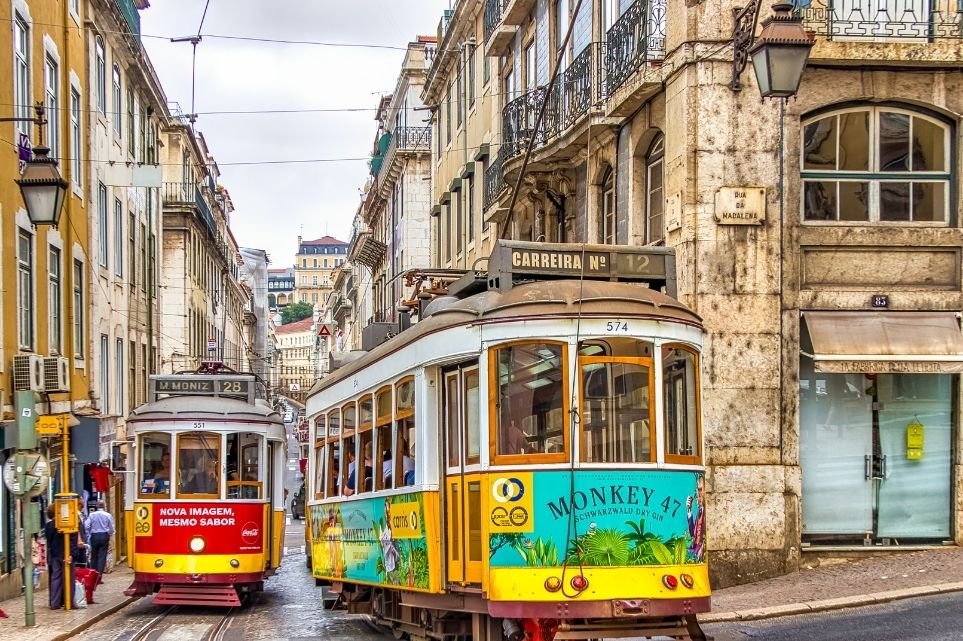
Trying to decide where my next adventure should take me, Portugal kept popping up as a hot spot to visit. After doing a little research, I decided to make plans to check out Porto.
Porto is the second-largest city in Portugal. Porto is full of charm, a collection of cultural attractions, a foodie paradise, and excellent port wine. Porto is along the ocean coastline with contrasts of gorgeous, tiled buildings, with lots of European charm. Famous for its blue “azulejos” tiles designed in various patterns, depicting historical scenes in blue shades offer great photographic opportunities. What attracts most people is its excellent climate, and it certainly was perfect for us (we are from the coastal region of South Texas). With art galleries, picturesque landscapes, vintage bookshops, and countless cellars, the city is ranked high for a great place to live.
I want to share my favorite places, and I hope you will consider visiting this charming Portuguese getaway.
Where to Stay
When traveling on long trips, I find it more comfortable to stay in an apartment or small home that will allow us to prepare a few meals, spread out our belongings, and know that someone is not in and out of our room every day.
I am a die-hard fan of Airbnb, and our apartment in Porto was across the street from the Sao Bento Station. The apartment had floor-to-ceiling windows, which allowed us to enjoy the fresh air.
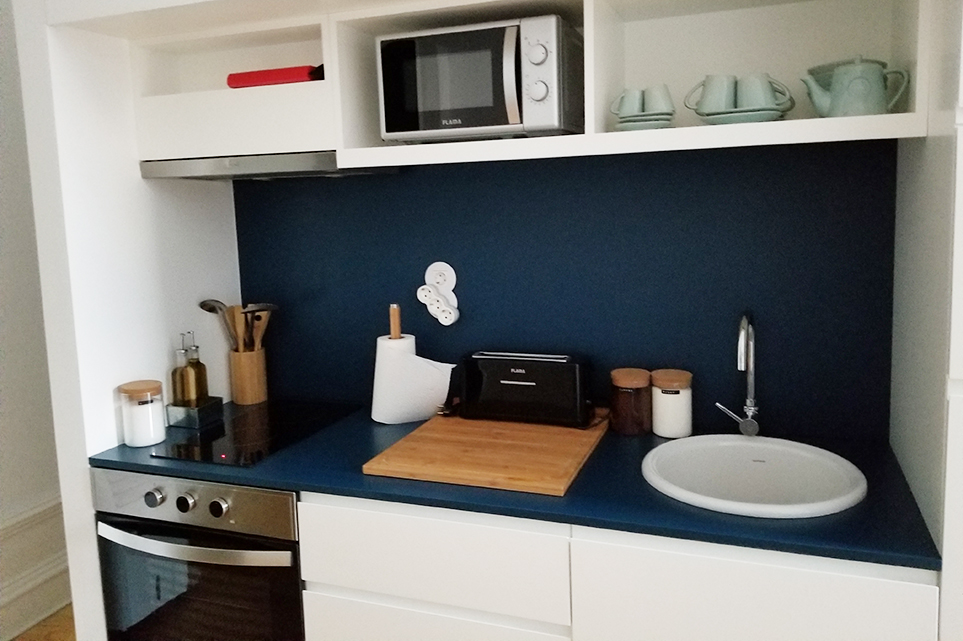
The apartment was decorated in light grey and white, which made it feel spotless and tidy. The apartment building was nicely renovated with all the modern appliances—perfect Airbnb for our 7-day stay in the city. The location allowed us to access public transportation service very quickly.
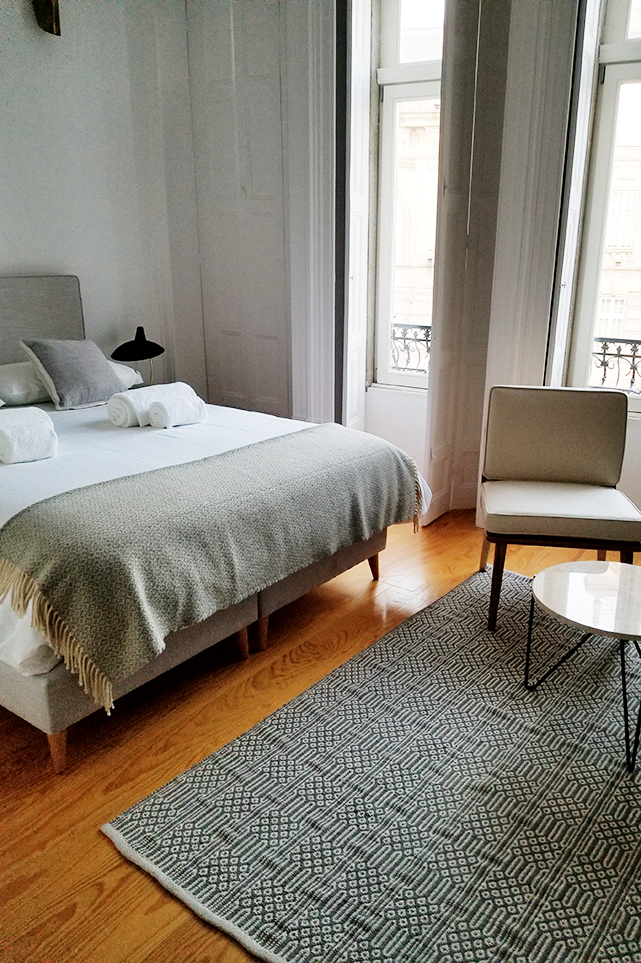
How to Get Around
If you fly into Porto, I recommend taking an Uber to your hotel or apartment. At the airport, you can purchase a 3-day Andante Card with unlimited access to public transportation for 72 hours from the time of the first validation. Remember to validate your card before every trip. (You will be checked).
Andante Card cannot be used on the tram or funicular, so you will need to purchase the Porto Card. You can buy the Porto Card at the funicular station or when you board the tram.
One aspect we both loved about Porto is its walkability. But if you prefer to ride, public transportation is widely available and relatively easy to navigate. Taxis and Ubers are readily available.
“Azulejos” TILES
“Azulejos” tiles date as far back as the 13th century, when the Moors invaded the land that now belongs to Portugal. The word “azulejo” stems from Arabic roots, meaning ‘small, polished stone.’ Simple in structure and cut into geometric shapes in neutral tones, tiles were used to cover large spaces of the plain ordinary buildings’ blank walls during the Gothic period.
“Azulejo” tiles have made Portugal famous for its unique artistry. It won’t be hard to notice these colorful tiles as they are everywhere!
Here are some recommended spots to see “azulejo” tiles. You can also read reviews and get locations by visiting TripAdvisor.
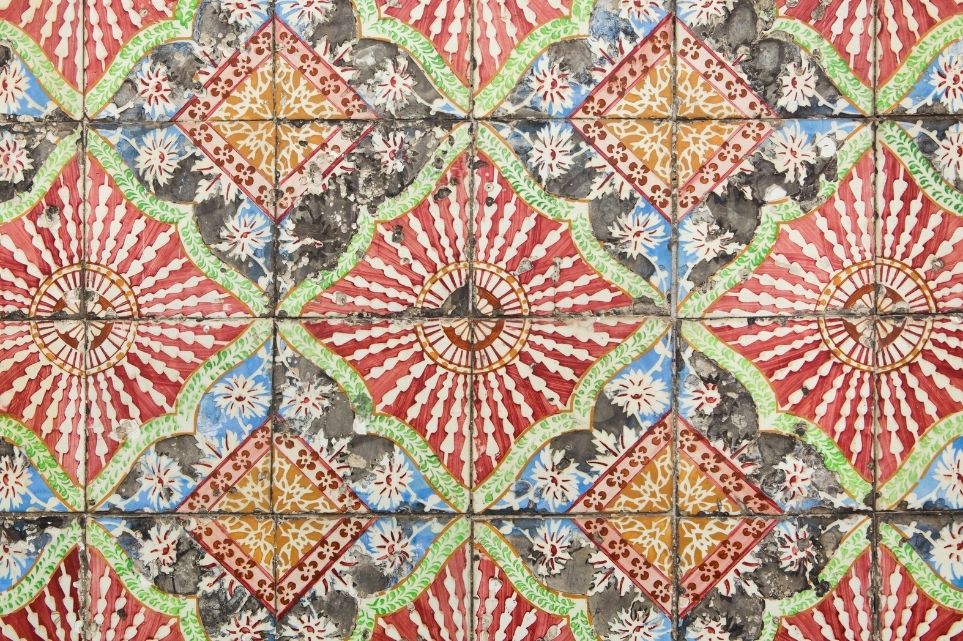
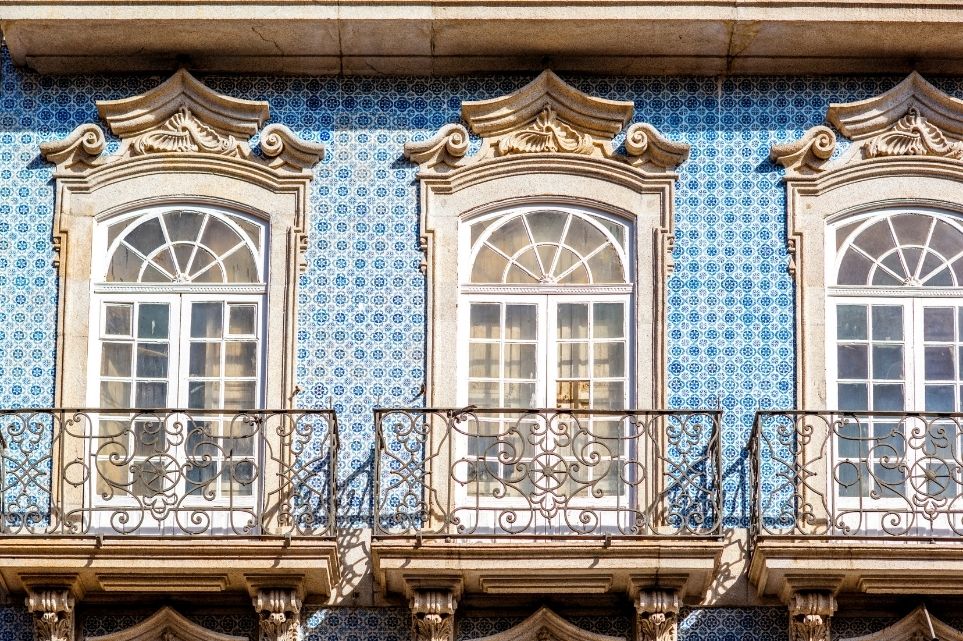
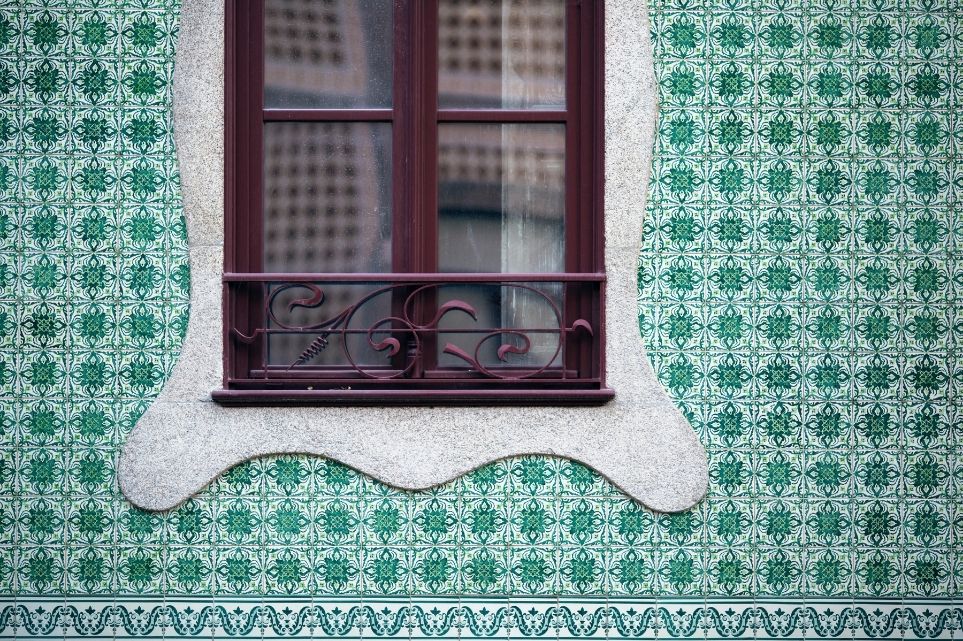
In addition to the beautiful blue tiles, you will see many other homes and buildings with colorful tiles in green, red, and yellow.
Gothic Churches
In Porto, you can find a cathedral in every neighborhood, each with its history. They are beautifully decorated with some of the most intricate stain-glass windows, along with elaborate altars. Visiting churches is an excellent way to understand the most critical moments of Portuguese history.
Here are a few to see:
Clerigos Church and Tower
The Clerigos Church and Tower are one of Porto’s most important landmarks, built-in 1754, located on a hill, designed by Nicolau Nasoni, an Italian architect. At the top of the Clerigos Tower, you can see a 360-degree view over Porto. While visiting the church, we got lucky with a performance by an organist playing classical hymns.
- The line is a bit long, so be prepared to wait or skip the line and buy your ticket online in advance. The pathway from the tower is very narrow, and the temperature can be warm inside the tower. (if you are going in the summer). It cost approx. $4 pp
- Tours: GetYourGuide
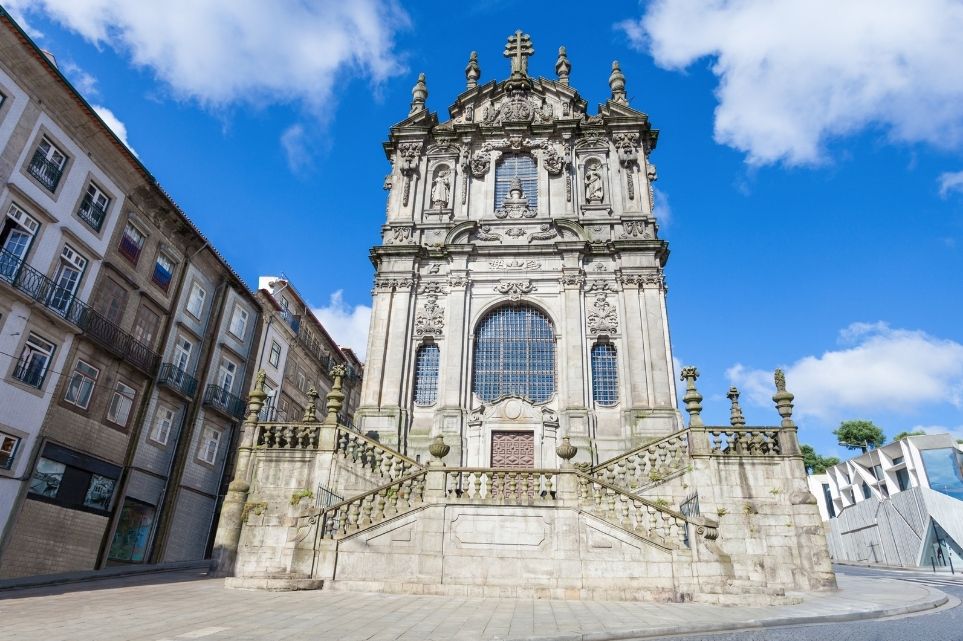
Clerigos Church
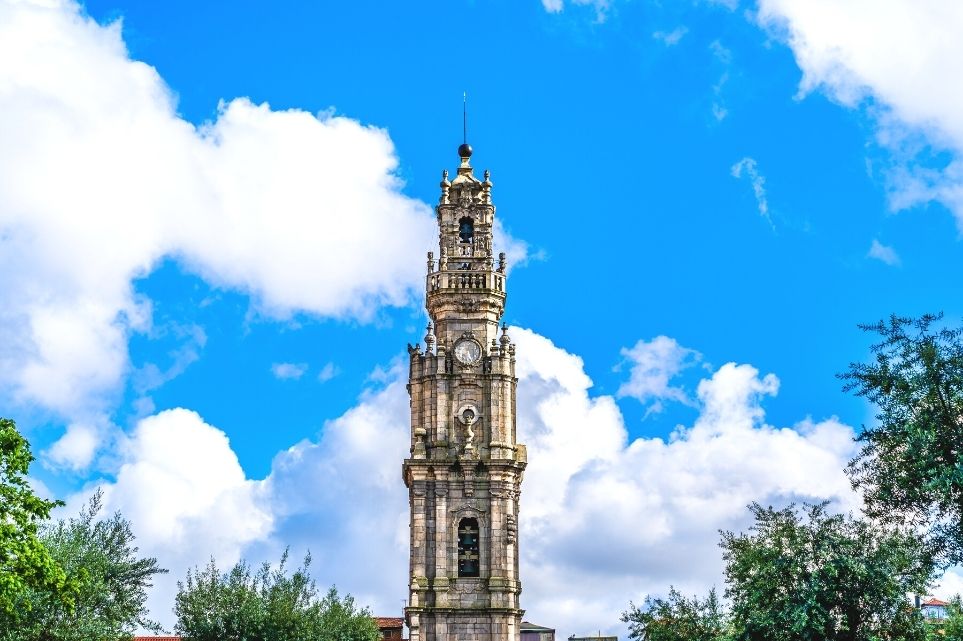
Clerigos Tower
Church of Carmelitas
Carmelitas has a striking architectural design with blue tile on the façade. The church dates back to the 17th century. Inside is an extravagant rococo altarpiece, expressing a great example of Baroque architecture.
Tickets: Free entrance
Church of Carmo
Located next to the Church of Carmelitas is the Church of Carmo. Because they are so close, they look like one of the same from the outside. They are connected by what is one of the world’s narrowest houses. The Church of Carmo was built in the 18th century designed with seven elegant altar carvings. One of the exterior walls is a mosaic blue and white tiles. Look closely at the details of these tiles designed and created in 1912 by Silvestro Silvestri.
Tickets: Free entrance
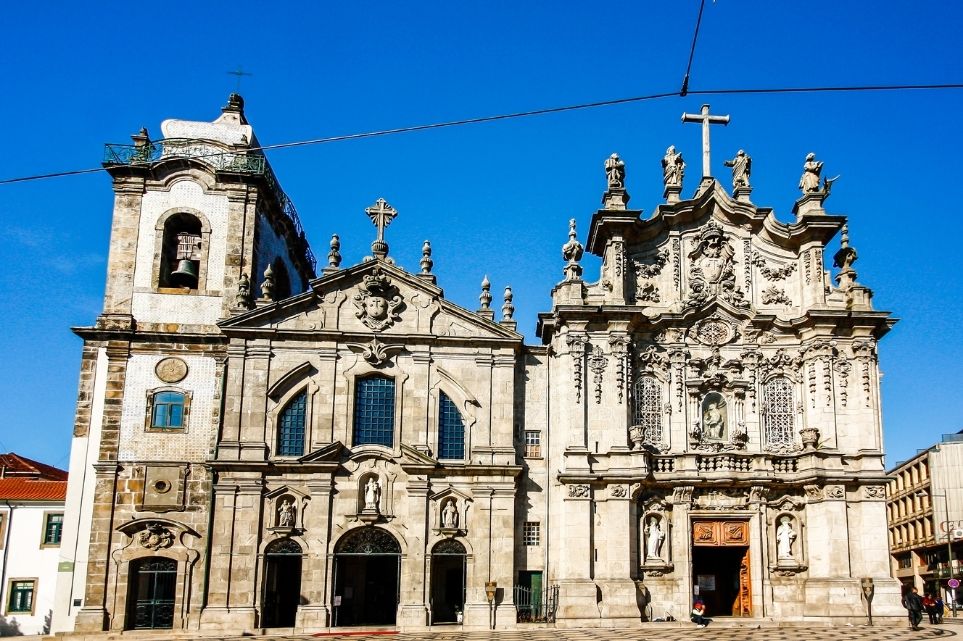
Church of Carmelitas
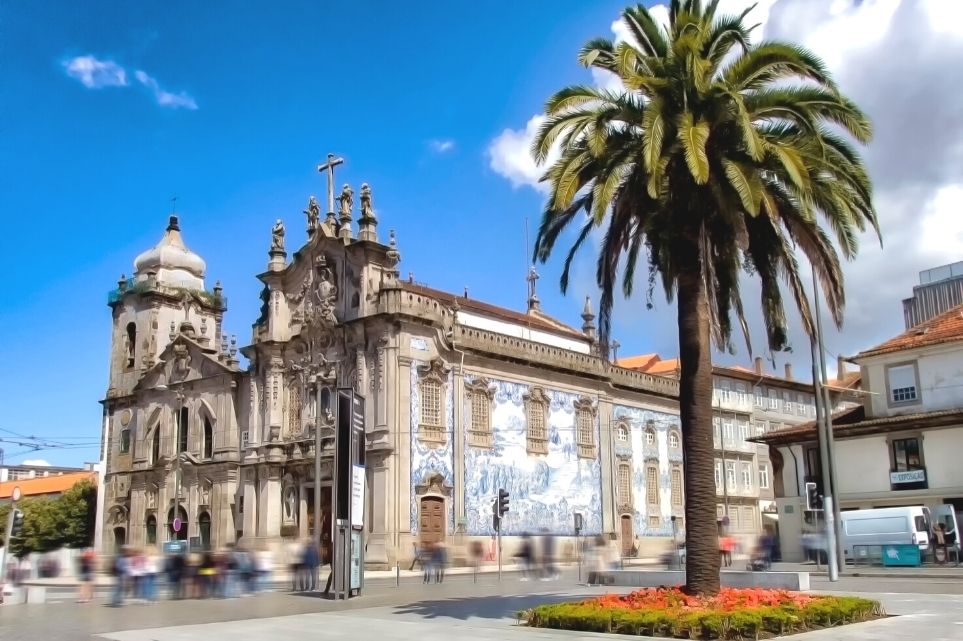
Church of Carmo
Porto Cathedral
Atop on a picturesque hill overlooking the city is the Porto Cathedral. It is one of the city’s oldest churches dating back to the 12th and 13th centuries. Take plenty of time to admire its varied styles, from Romanesque to Baroque to Gothic. Right next door, you can find the Medieval Tower and the Church of St. Lawrence.
- Tickets: Free entrance
- Tours: GetYourGuide
Church of Sao Francisco and Catacombs
The Church of Sao Francisco is one of the earliest Gothic-style churches in Porto, built-in 1245. The exterior is straightforward compared to all the other churches, but the interior is one of the most exquisitely detailed, and a bit flashy you will see in Porto. The gold-decorated church is very striking! You will find over 800 pounds of gold, Rococo style, used to decorate the lavish woodwork. One story told that when Napoleon’s troops invaded, the French looted many of the decorative gold pieces. So, to prevent such looting, the monks painted a whitewash over the gilded interior, and it worked.
Next to the church is the museum and the Catacombs, where the Franciscan monks and members of Porto’s wealthiest families are buried. The catacombs also house an ossuary with thousands of human bones, which you can see through a glass floor.
- Tickets: Entrance Fee Required
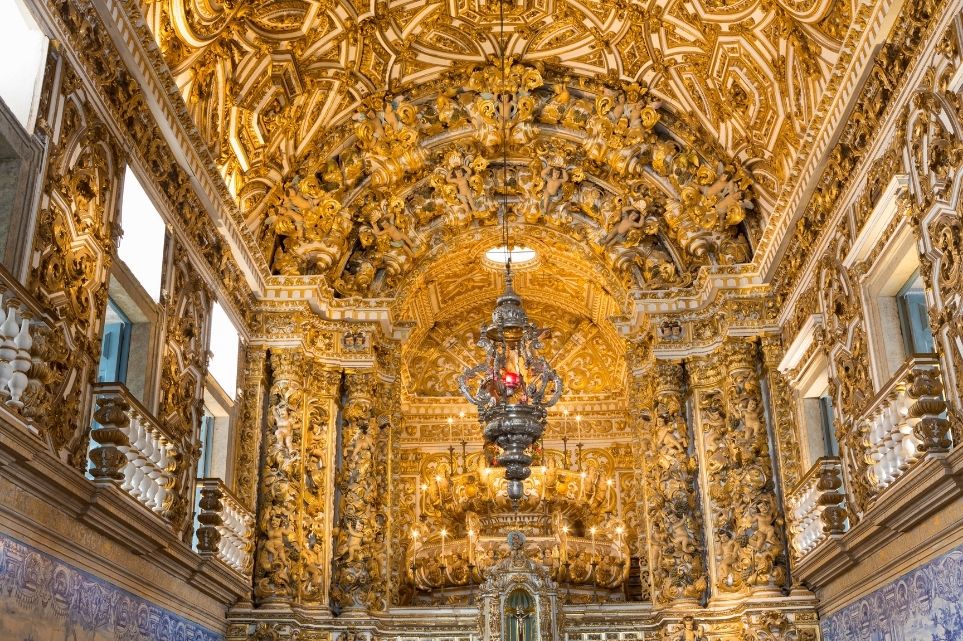
Church of Sao Francisco
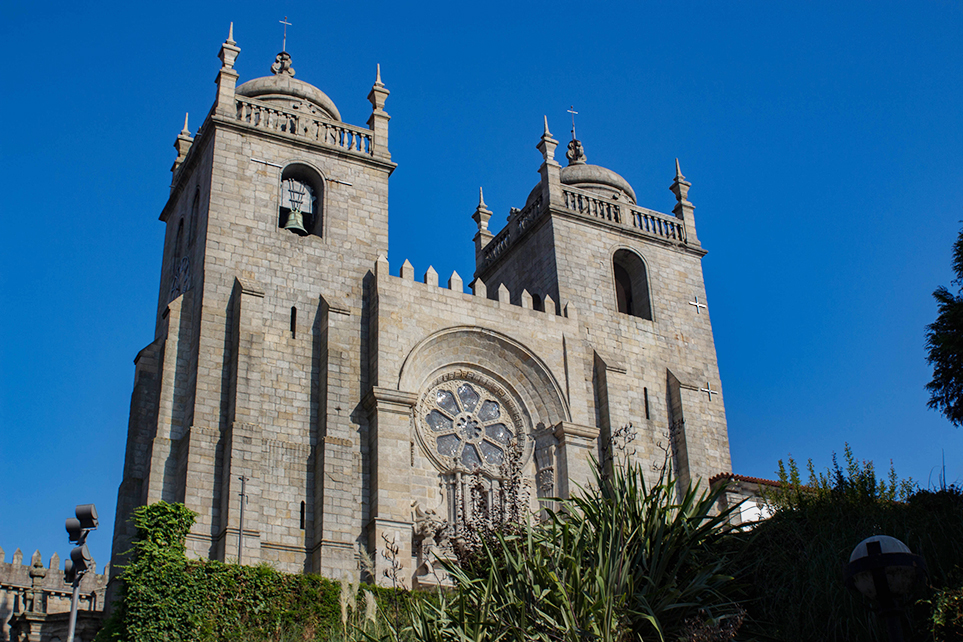
Porto Cathedral
Church of Saint Ildefonso
Church of Saint Ildefonso is the unique 11,000 tiles decorated church, depicting scenes from the life of St. Ildefonso and the Gospel. Stain-glass windows are all around the church’s inside, and the sunlight illuminates the images at different hours of the day.
Tourist Hot Spots
The Majestic Café
The Majestic Café is located on one of Porto’s busy shopping streets, Rua Santa Catarina. Built-in the 1920s, the art nouveau style café is filled with mirrors, detailed and magnificent old-world photos. The tables are very crowded here, and the service isn’t that great. It can get stuffy inside, so I recommend that you get a table outside for the fresh air and people-watch.
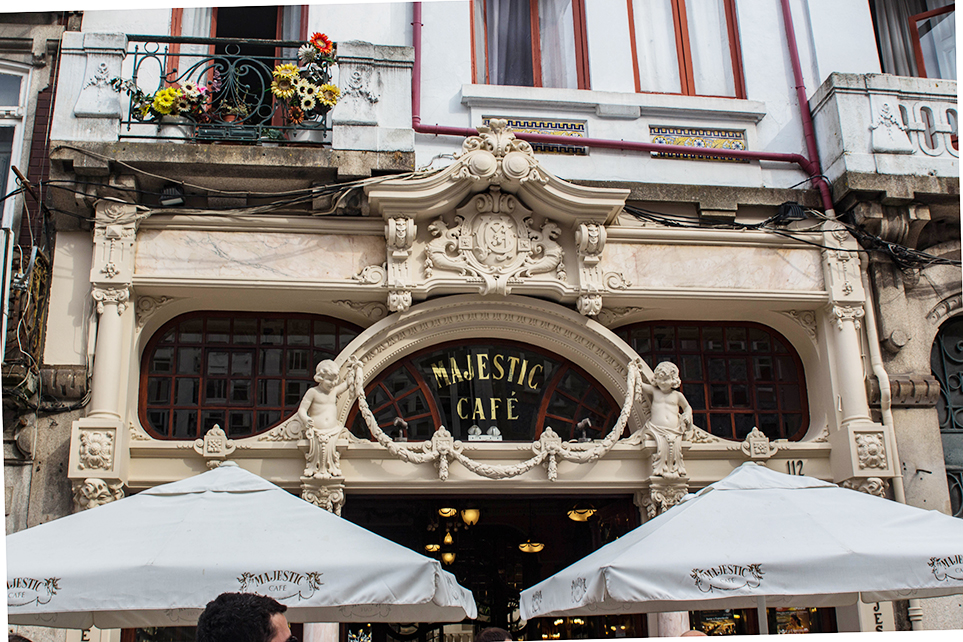
The Majestic Cafe
Livraria Lello & Irmao Bookstore
One of Portugal’s oldest bookstores opened in 1906 and became noticeably famous by tourists due to JK Rowling’s books. The art nouveau style bookstore is worth the line outside to see. The spiral staircase and the design of this bookstore are worth the visit. Due to its popularity, you will find a long line out to enter, but don’t worry, it moves very fast.
- Entrance fee: approximately $5.00 per person, which can be applied to any book purchase.
- Tours: GetYourGuide
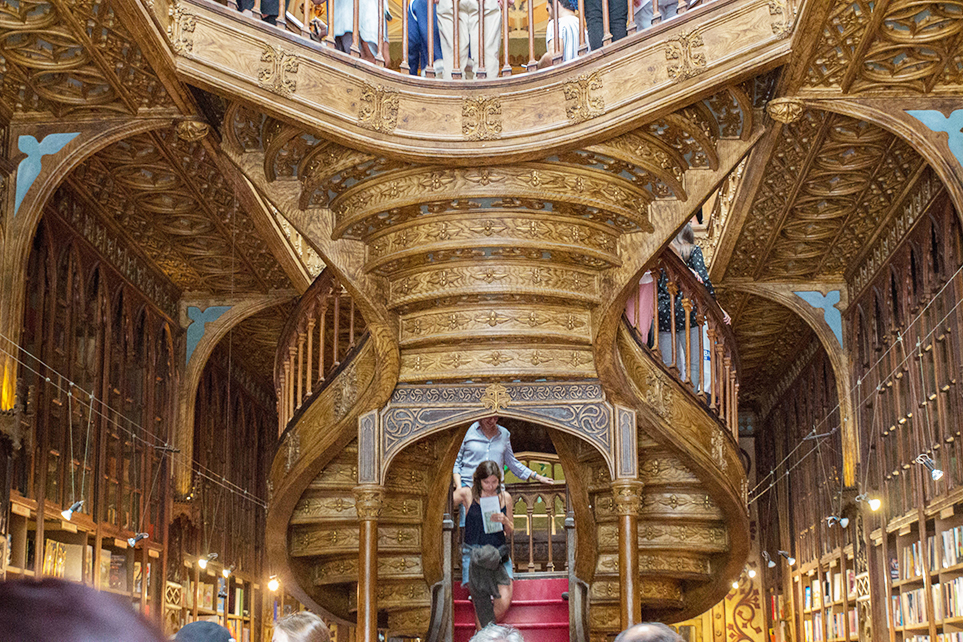
Livraria Lello & Irmao Bookstore
-
Palacio da Bolsa (Stock Exchange Palace)
It is listed on the “World Heritage Site” by UNESCO as a beautiful historical building, built in the 1800s, near Ribeira‘s historic center filled with Porto artifacts.
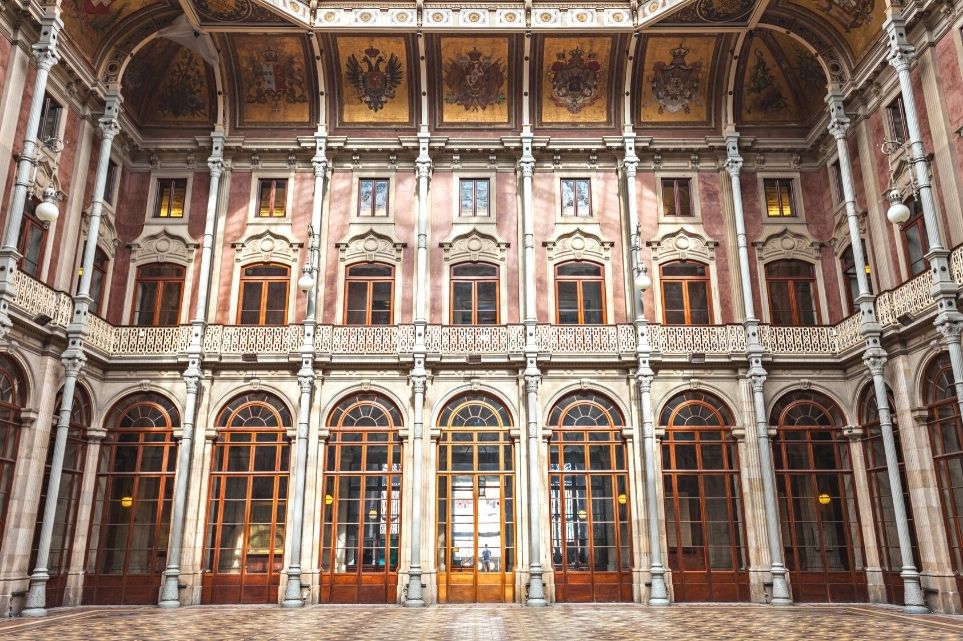
Palacio da Bolsa
PSST: HERE ARE SOME OTHER BLOG POST YOU MAY WANT TO CHECK OUT WHILE VISITING PORTUGAL:
DAY TRIP FROM PORTO TO BRAGA
13 BEST INSTAGRAM SPOTS IN PORTO
UNIQUE CHURCHES IN PORTO
BEST MARKETS IN PORTO
DAY TRIP TO AVERIO: ROMANTIC CITY
13 CAPTIVATING PLACES IN PORTO
Shopping
Loja das Conservas – Colorful tin-canned fish products, such as sardines, fill the store in a variety of seasonings. We had a great time reading the labels and admiring the colorful cans—a great place to pick up souvenirs.
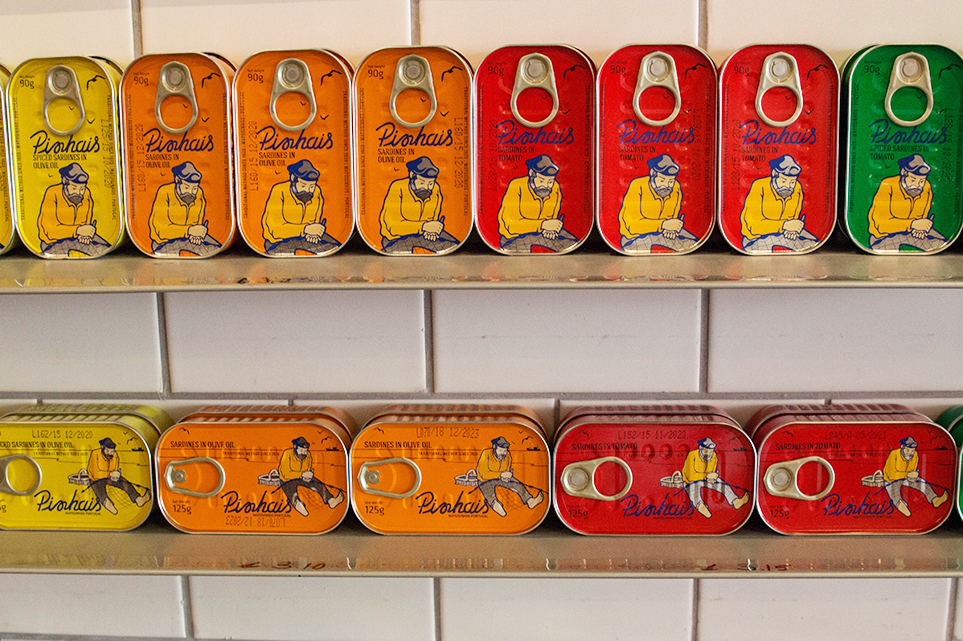
Loja das Conservas
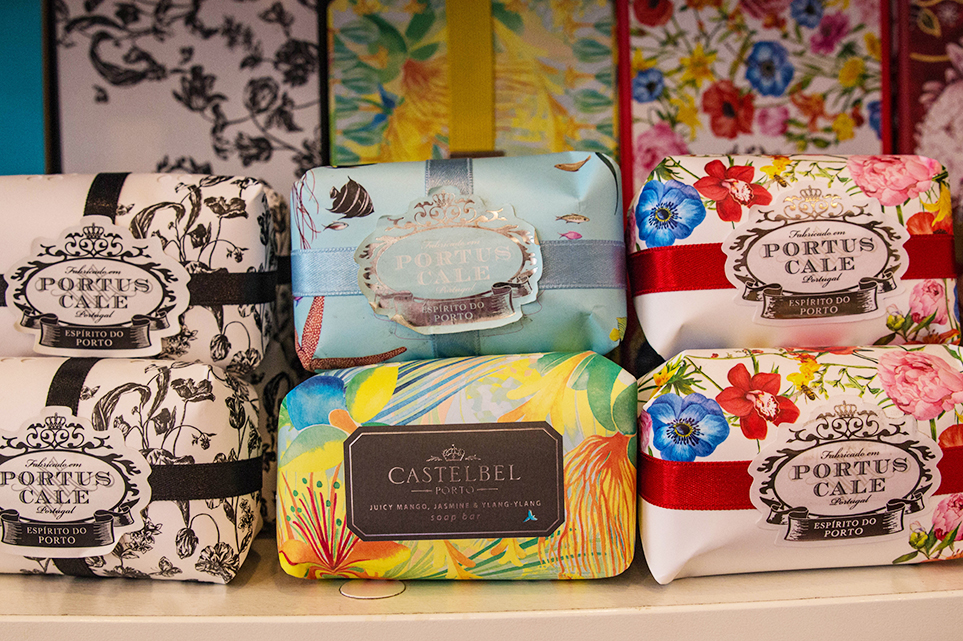
A Vida Portuguesa
A Vida Portuguesa –Old-fashion Portuguese home products such as soaps, dish towels, and tableware are available to purchase. We purchased a flowery scented soap.
Prometeu Artesanato – Close to the Ribeira district is the eclectic art studio full of decorative tiles, jewelry, and unique art pieces made from cork.
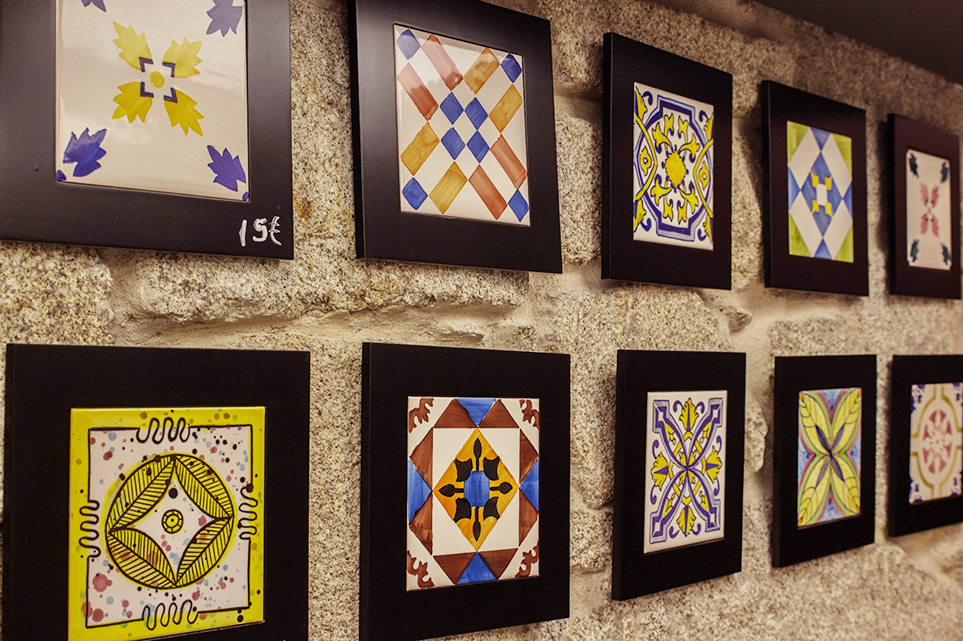
Prometeu Artesanato
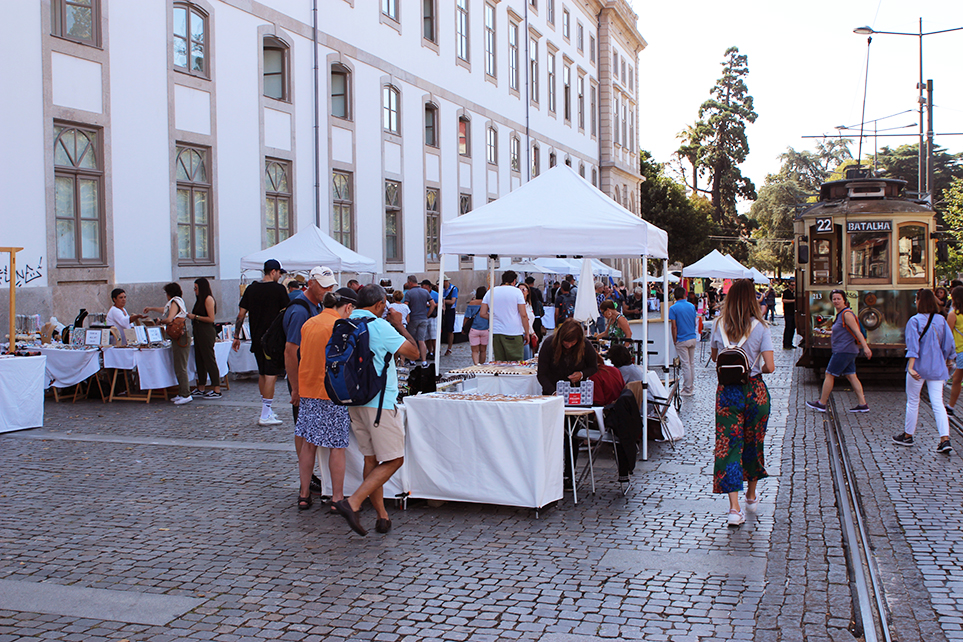
Rua de Santa Catarina
Rua de Santa Catarina is the place to find everything from shoes, designer clothes, handbags, restaurants, bakeries, coffee shops, and much more. It is popular with locals on the weekend so expect it to be crowded. Street performances will entertain you while you shop.
A Perola do Bolhao – This quaint delicatessen has been in operation since 1917 and now operates as a mini grocery store. The bright color façade attracts shoppers as they travel to and from the central part of the city.
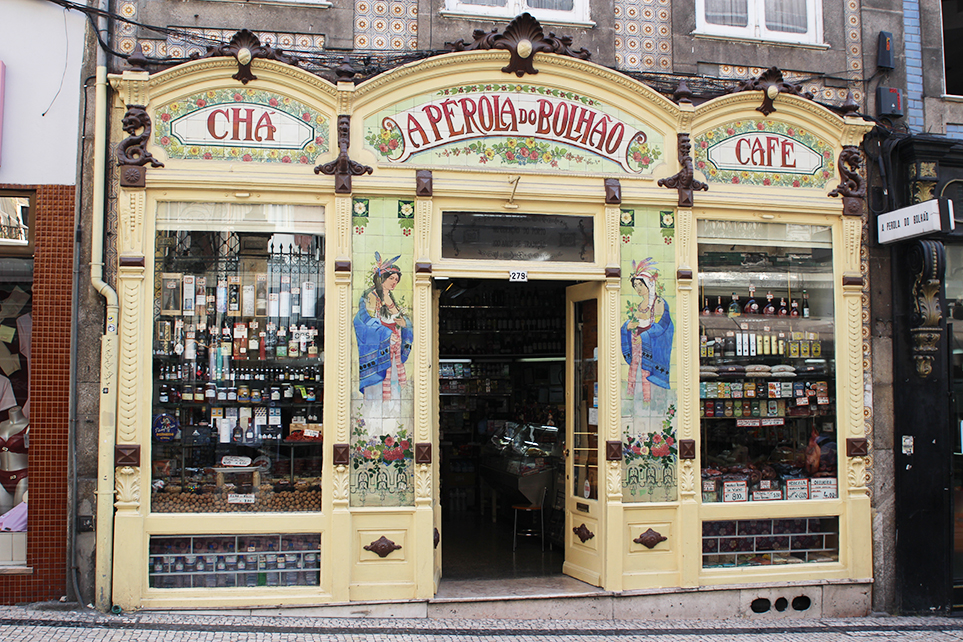
A Perola do Bolhao
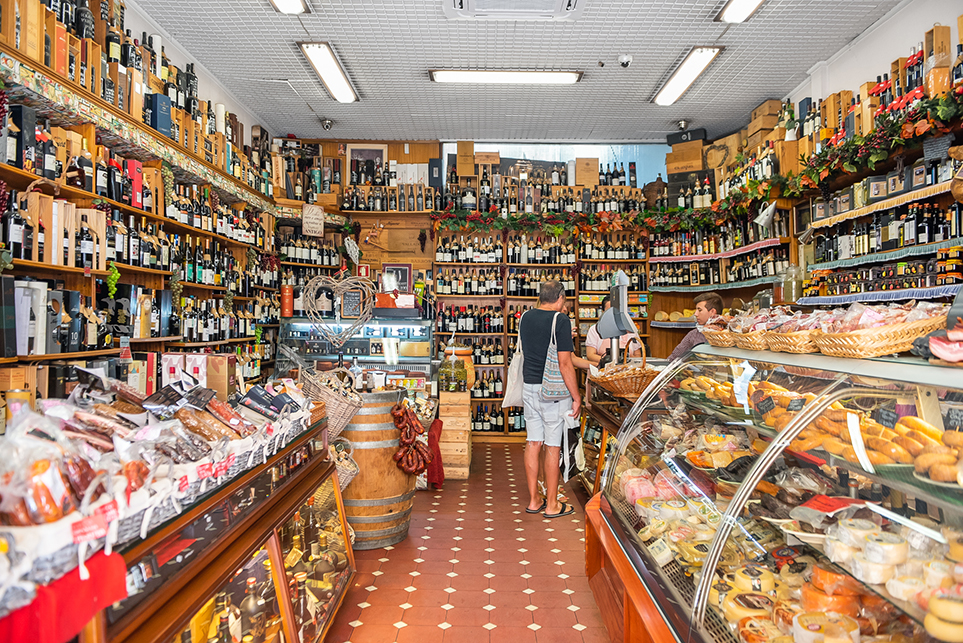
Comer e Chorar por Mais
Comer e Chorar por Mais – Looking for local wines, various cheeses, and meats, this is the store for you. Many locals shop here daily.
Mercado de Artesanato do Porto – Artisan products can be found at the Mercado de Artesanato while exploring the historical center near the Clerigos Tower. Book covers and purses made from cork, jewelry designed like the blue tiles, and so many other decorative art pieces, waiting for you to purchase.
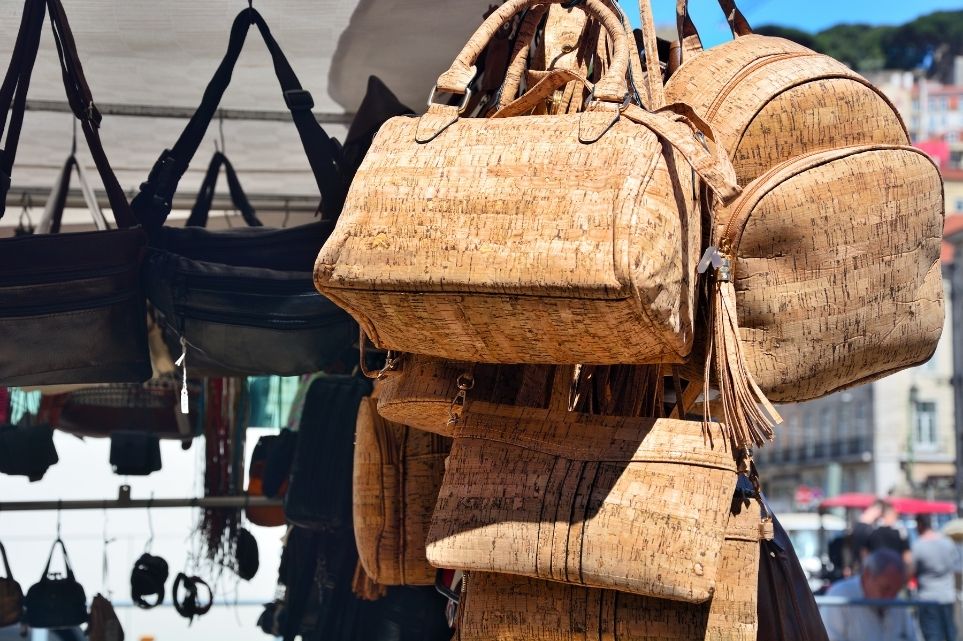
Mercado de Artesanato do Porto
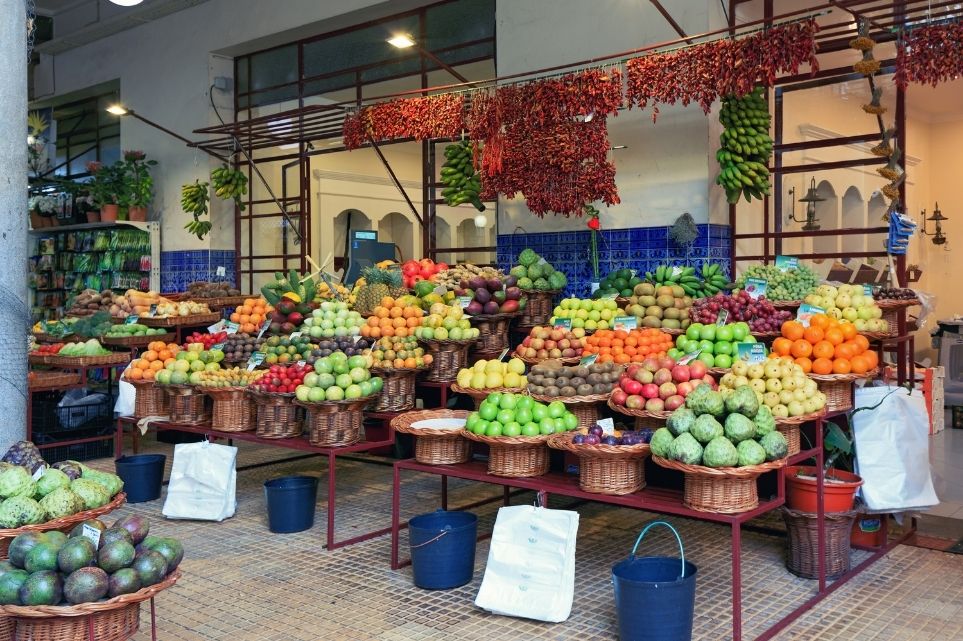
Mercado do Bolhao
Mercado do Bolhao – is one of Porto’s most important markets in the city. They are known for fresh produce, fresh meats and fish, flowers, and other goods. Built-in 1839, this market had a small creek running through, and at the square, air bubbles (bolha) began to form at that spot hence the name Bolhao. The city purchased the building and began to renovate the store. We bought Porto wine, two different kinds of local cheese, and fresh fruits while drinking freshly prepared fruit smoothies.
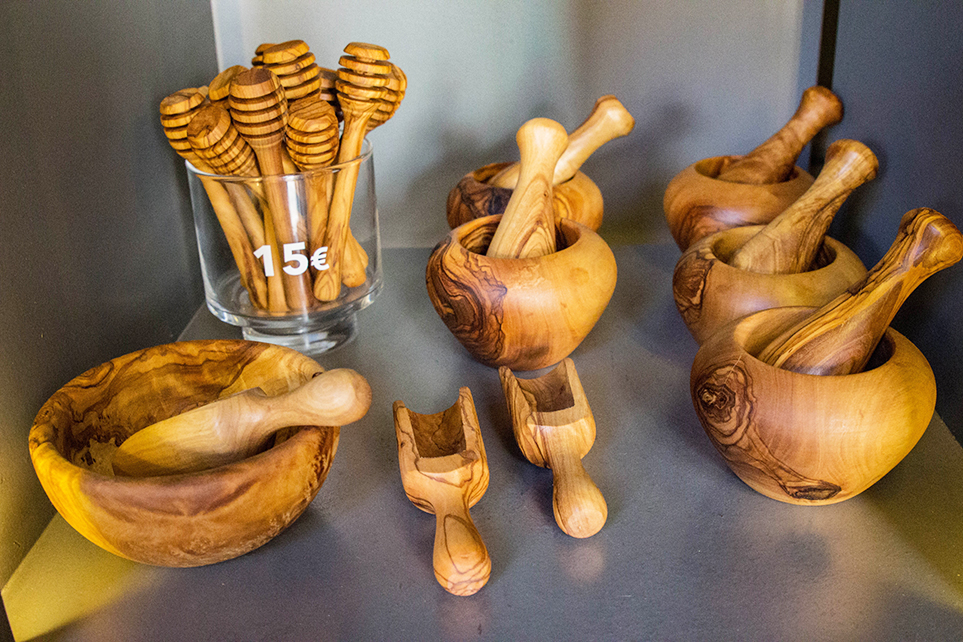
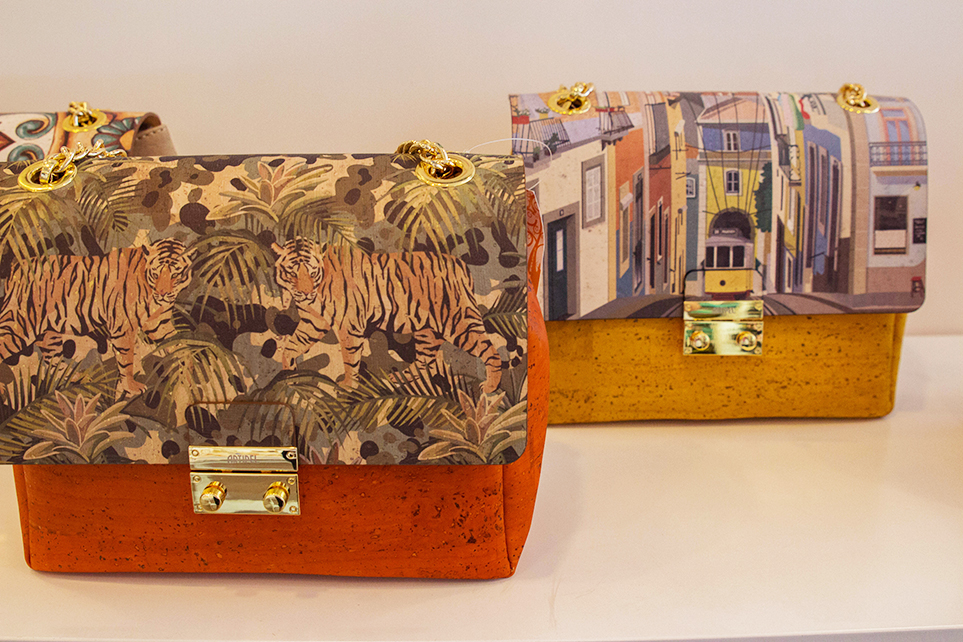
Visit the City Centre
Porto’s centerpiece is Avenida de los Allados, surrounded by grand buildings, from the neoclassical to French Beaux. Some of the most elaborate hotels as well as numerous banks are here. You will see a tall bronze statue of King Pedro IV in the center square, dating back to 1862. At one end of the court is Porto’s Townhall. Restaurants and shops outline the perimeter of the plaza.
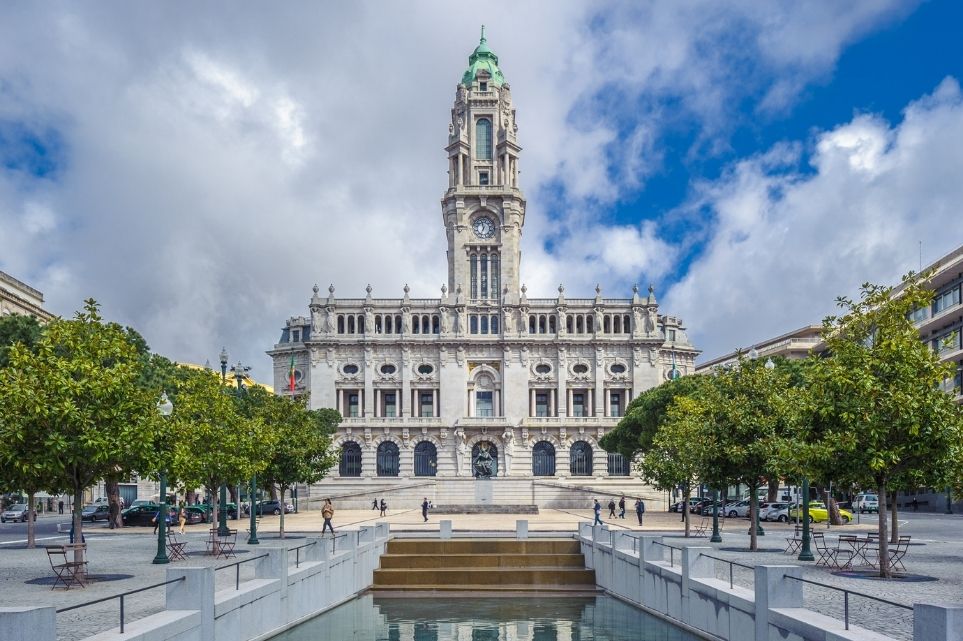
Porto City Hall
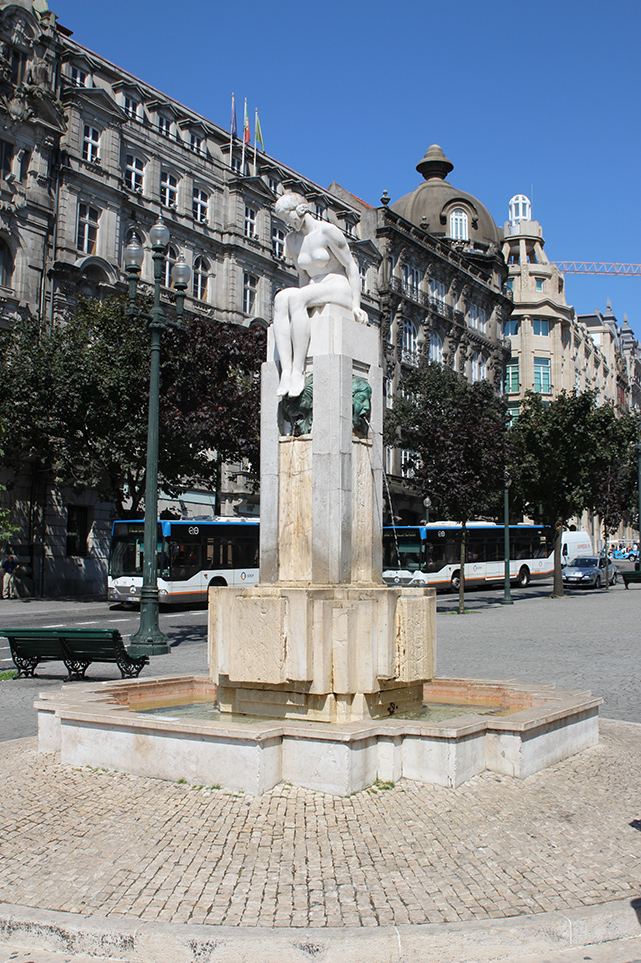
Naked Girl Statue
Ride the Vintage Tram
You catch the tram in front of Sao Francisco Church. The line to ride can be a bit long! The tram has limited seating, so be prepared to stand once on board. I recommend waiting until you can have a seat because you really can’t see as much standing.
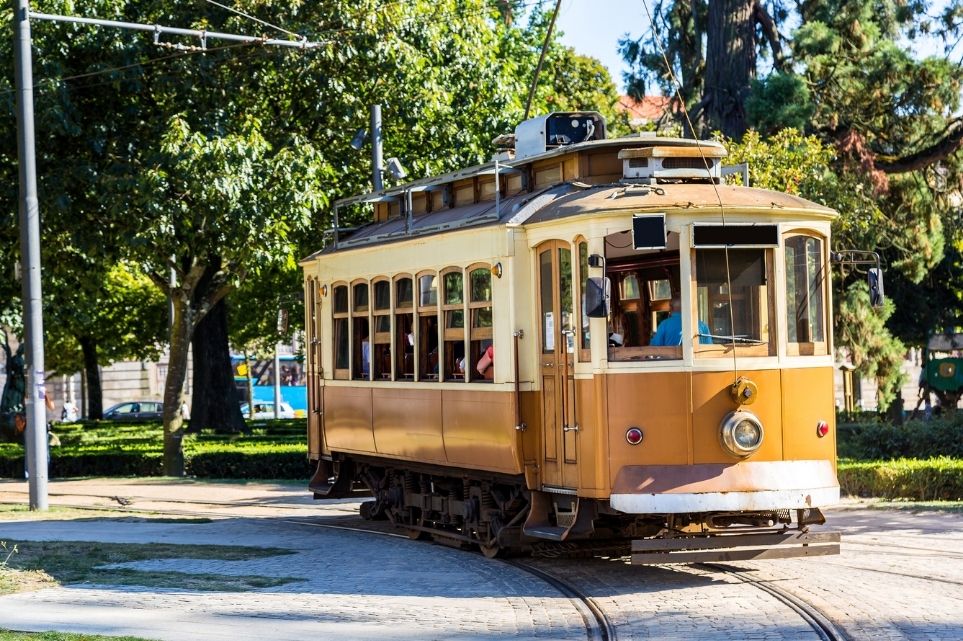
Porto Tram
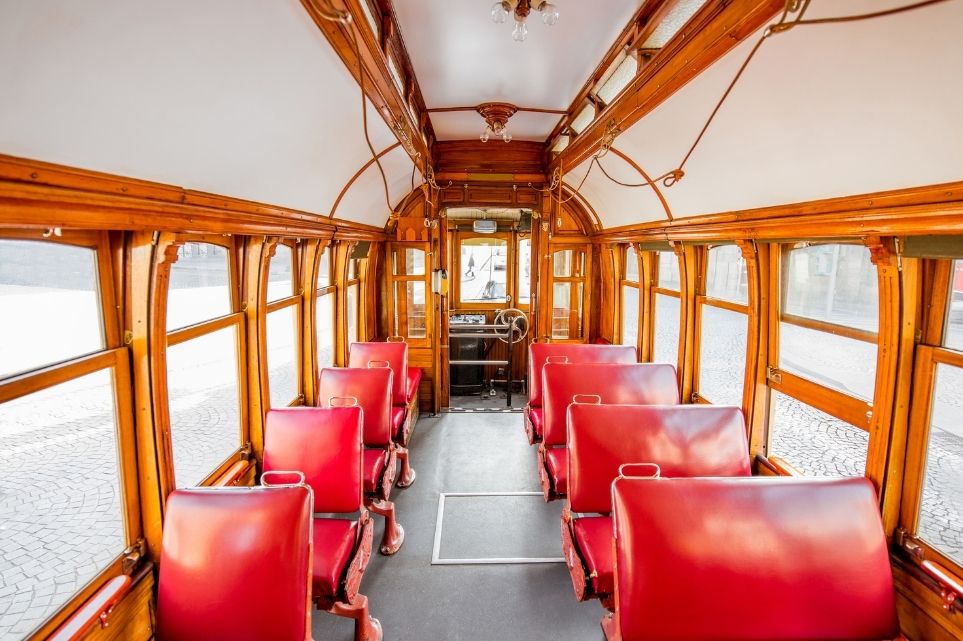
Inside Porto Tram
At Foz do Douro, a district near the river’s mouth facing the Atlantic, walk towards the water into a small park called the Passeio Alegre Garden. While we were visiting, the Brazilin Festival was being celebrated.
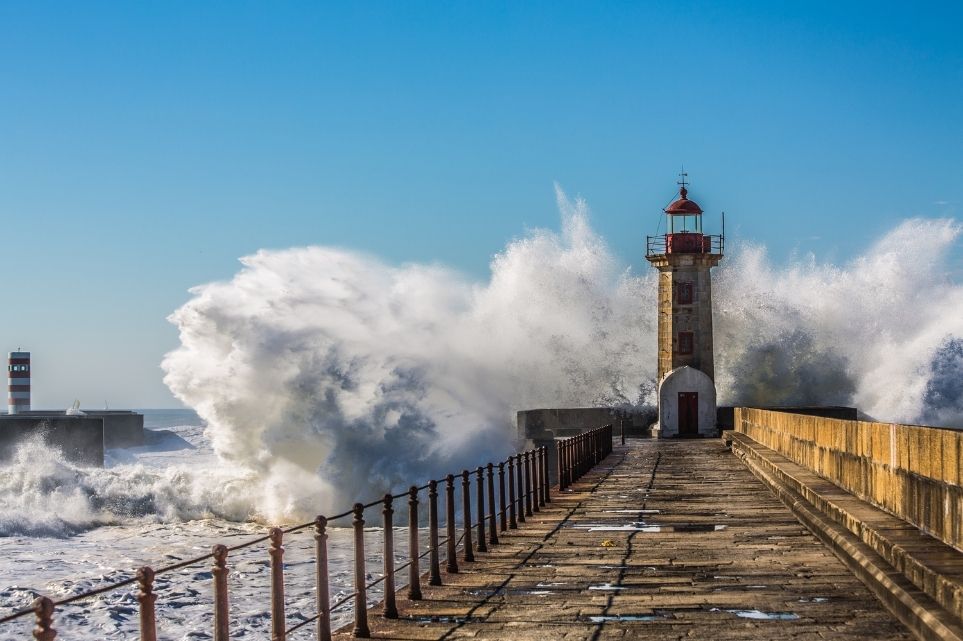
Foz do Douro
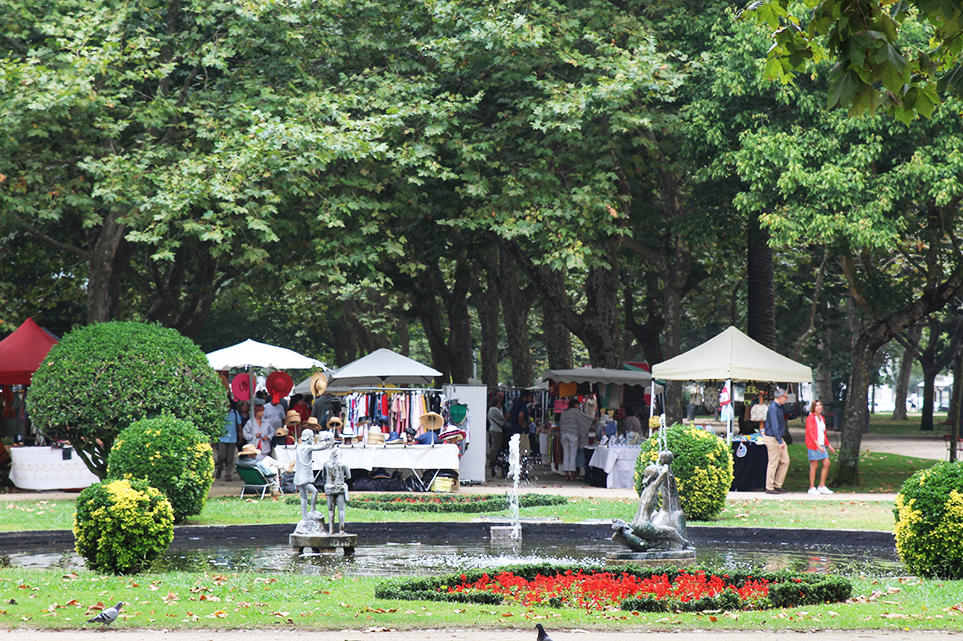
Passeio Alegre Garden
As you continue your walk along the strand, make your way to The Felgueiras Lighthouse (the Lady of Light). Although this lighthouse is no longer in operation, it is a historical reminder that Mariners’ times when voyagers came ashore making Portugal their home. Many locals fish off the strand catching sardines.
- Make sure you bring your camera, as it is a great place to capture some shots of the crashing waves crisscrossing along the jetty.
- Trolley Schedule: The tram comes along every twenty minutes, between 9 am – 6 pm.
- Entrance Fee: Approximately $5.00 round trip to ride per person.
Relax in the Park
Parca de Lisboa is located near the Clerigos Church. A well-manicured green space located in the city center is an excellent place to take a break, relax, and enjoy the outdoors. Within the park is a small bar called Base Porto, which serves a variety of beverages. Sometimes the park will have musical events, show films or other artistic activities.
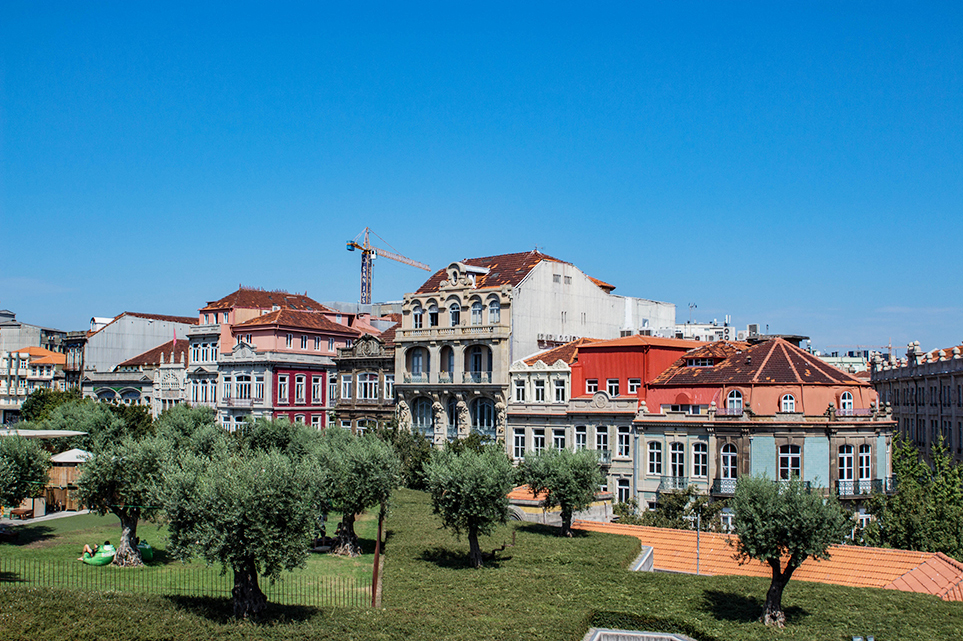
Parca de Lisboa
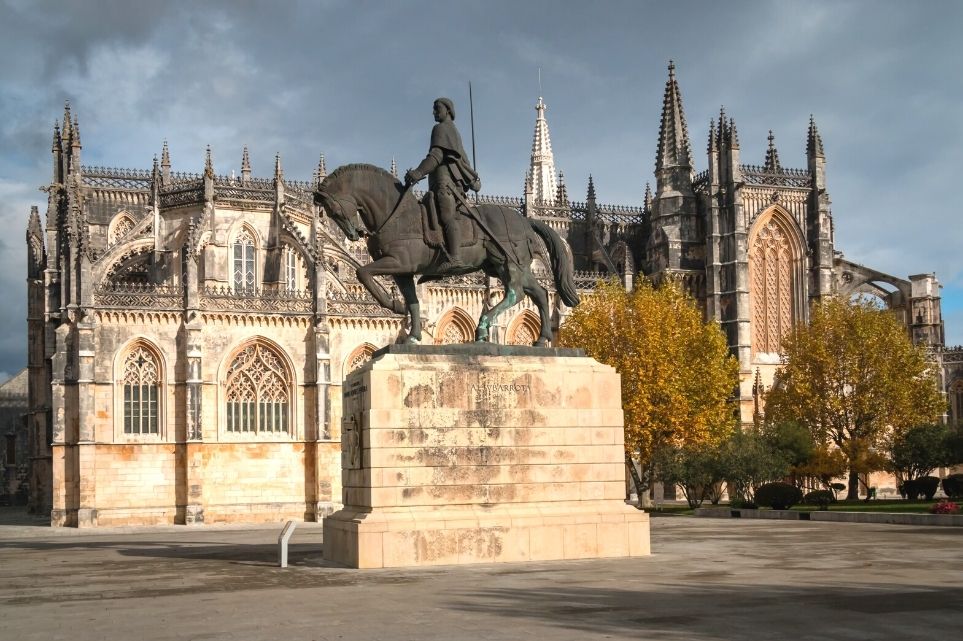
Parca da Batlha
Praca da Batalha is an 18th-century urban park near the opera house, the Royal Theatre of Sao Joao. In the center stands the statue of King Pedro V of Portugal sculptured by Teixeira Lopes.
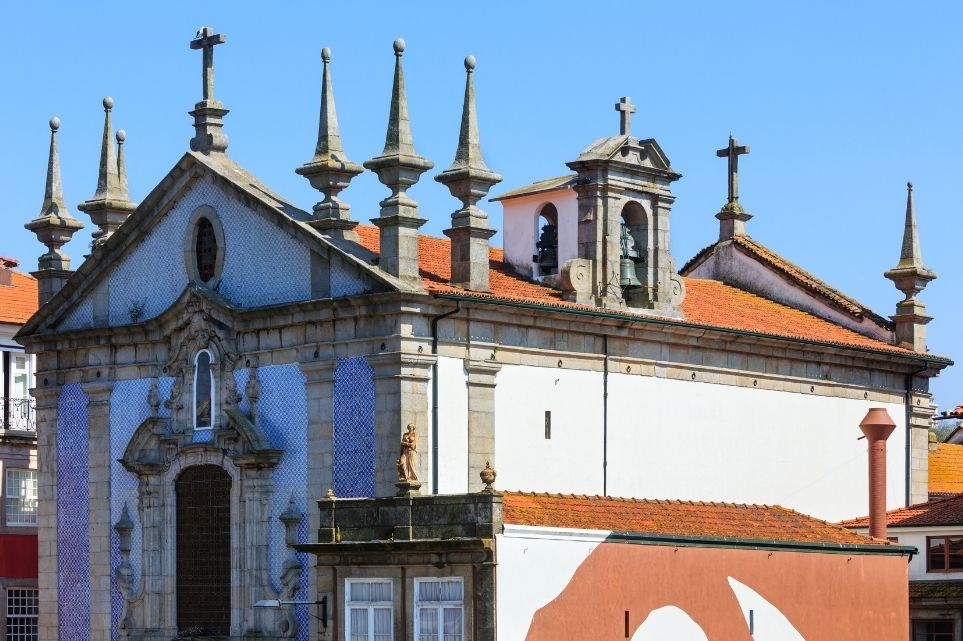
St. Nicholas Church
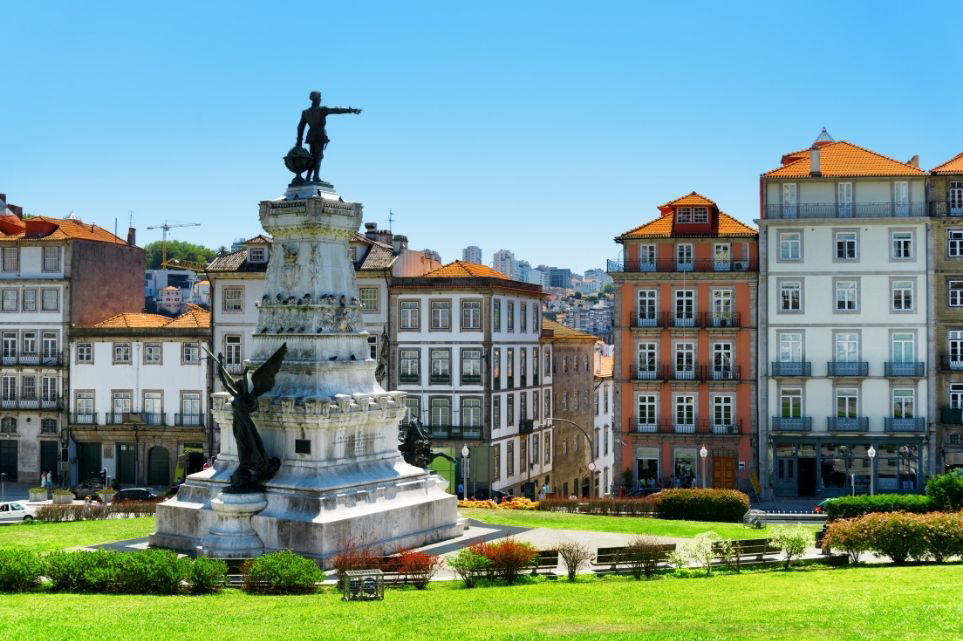
Jardim do Infante
Jardim do Infante is where the statue of Prince Henry the Navigator is located. Near the park are the Palacio da Bolsa, Market Ferreira Borges, and many other local shops. Near the park is the Church of St. Nicholas, built-in 1671 with a blue tile façade, and on the one side is a unique mural.
Ribeira Square
Ribeira Square is where most visitors gather in the evening for drinks, socializing while watching the sunset over the river or listen to musical performances.
We watched a performance of a man performing a Portuguese dance with a woman mannequin. Quite entertaining!
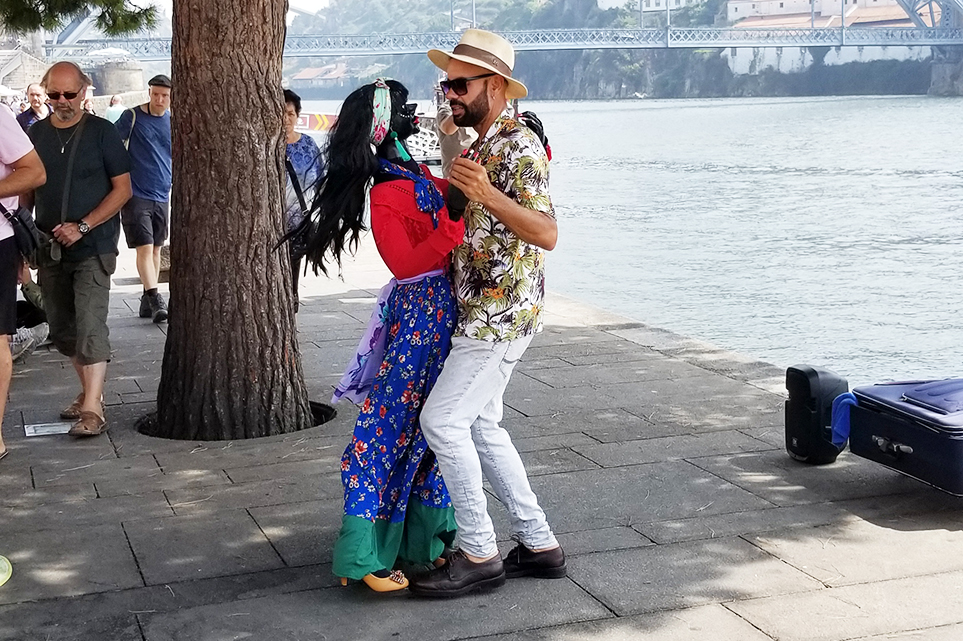
Dancing Performance
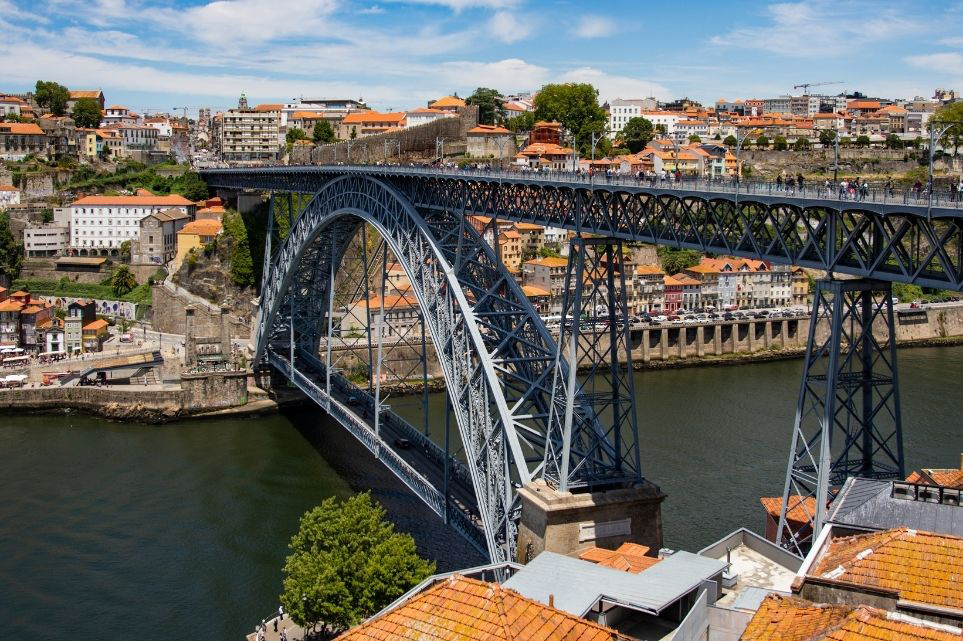
Ponte Dom Luis I Bridge
During the day, artesian markets will be near the Ponte Dom Luis I Bridge. We enjoyed browsing through homemade items. On the other side of the river is called Gaia. I recommend walking across this double-decker bridge and check out the spectacular views.
Gaia
Once you cross the Dom Luis I Bridge, you will be in the Gaia neighborhood, peppered with wineries offering wine tours and tastings. Street vendors, restaurants, and many café terraces with fresh seafood pepper the streets. A wine tour is a must-do while in Porto.
- Tours: GetYourGuide: Wine, Cheese, and Chocolates Tour
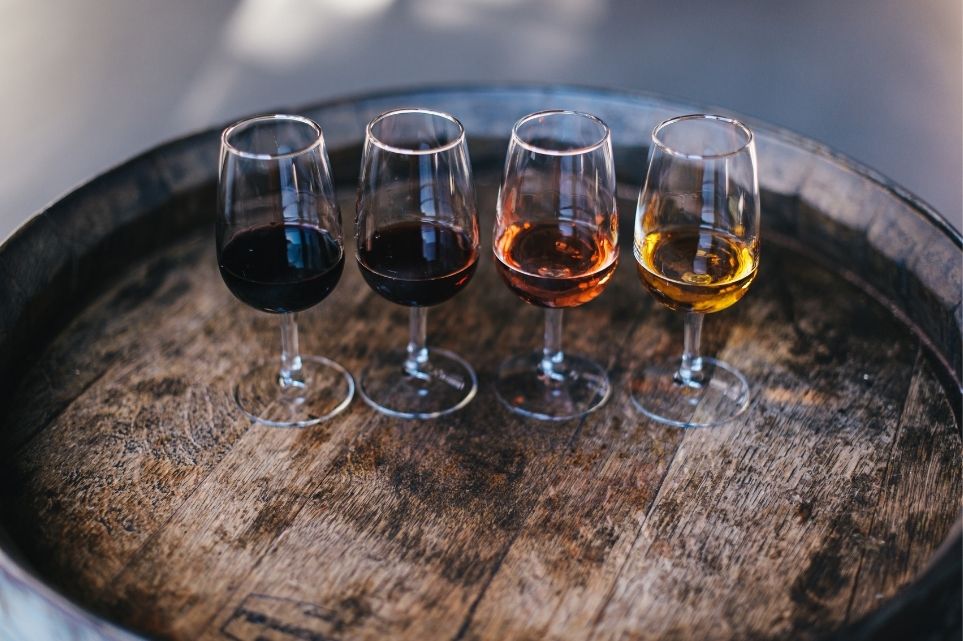
Wine Tour
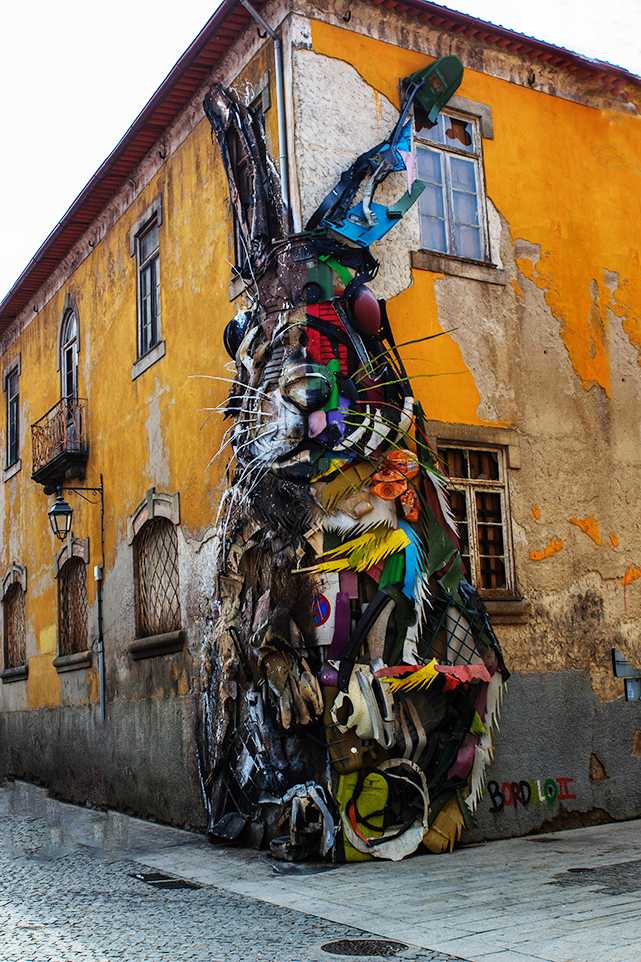
Half Rabbit
Check out the “Half Rabbit“ art piece created by Bordalo II made from recycled materials.
Not far from “Half Rabbit” is a beautiful blue-tiled church called Santa Marinha created by Nicolau Nasoni, which has a very distinguished altar of the crucifixion of Jesus believed to date back to 1420.
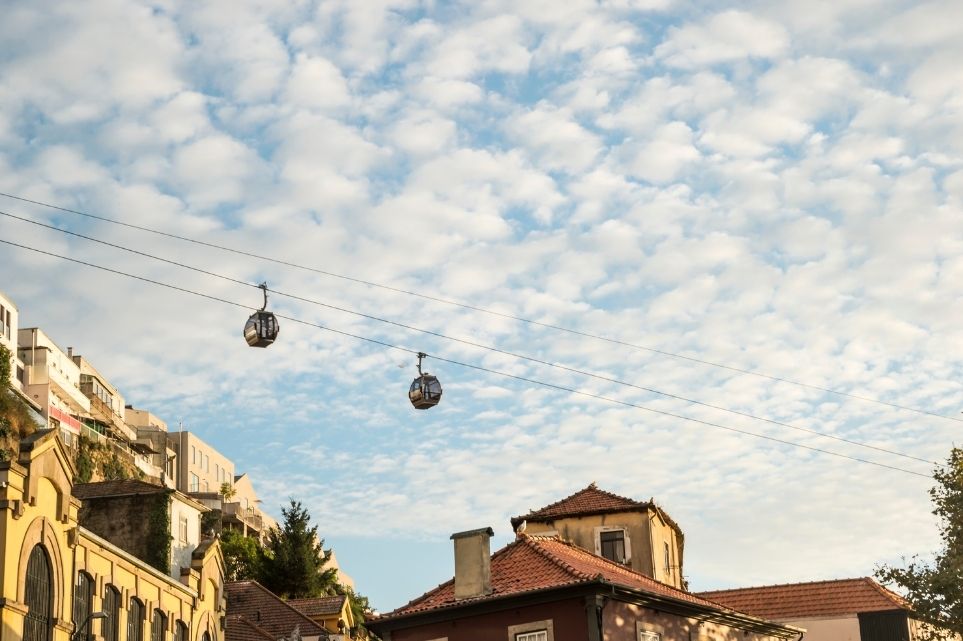
Teleferico de Gaia
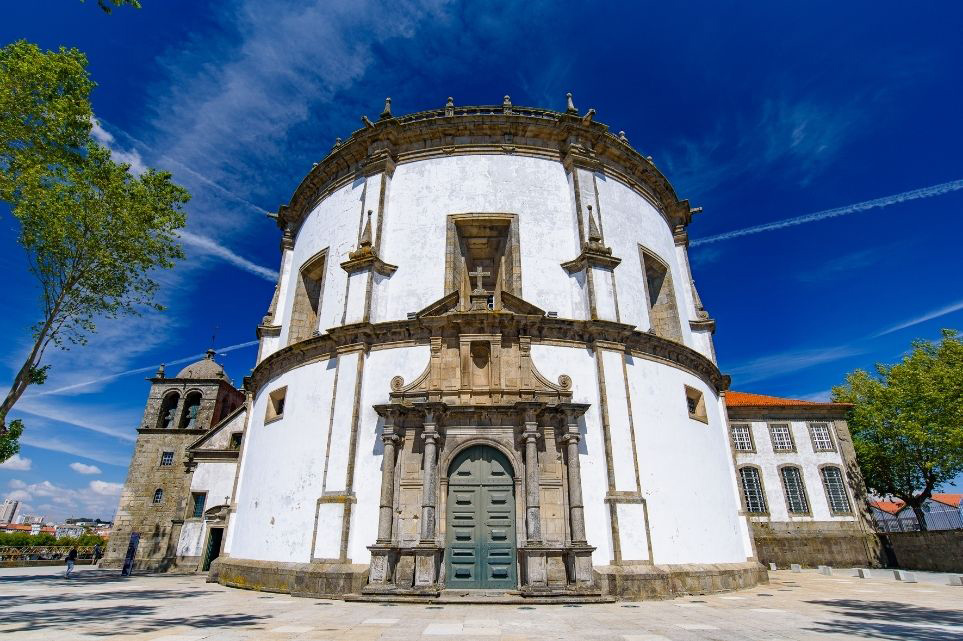
Monastery of Serra do Pilar
Visit the Mercado Beira Rio. In the center of the market is Super Bock beer, offering a variety of flavors to sample. Along the market’s outer edge are various restaurants offering traditional Portuguese dishes and in the center is a place to sit and enjoy your food. This place is not your typical food market but well worth the visit.
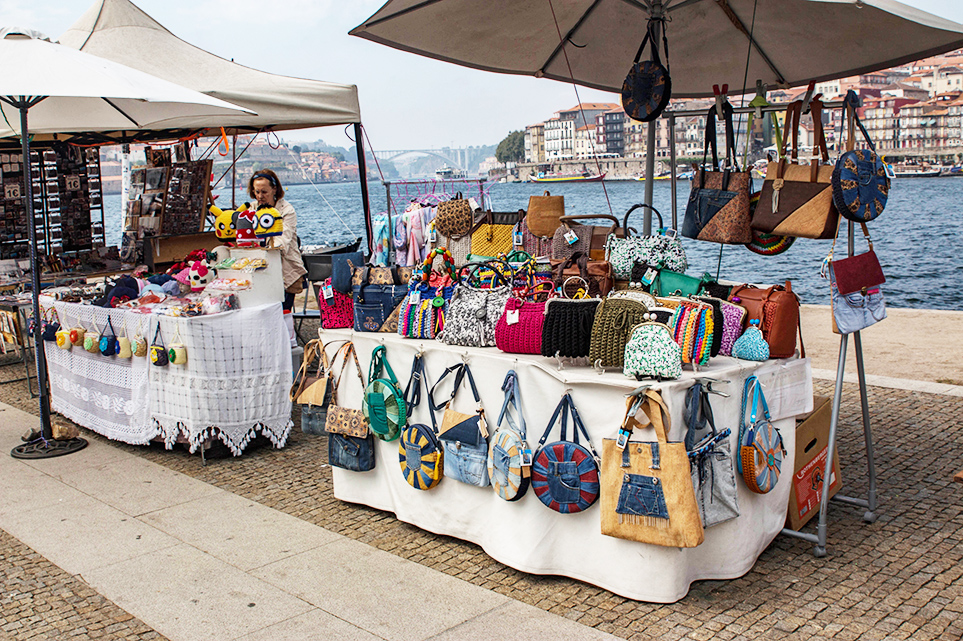
Gaia Street Market
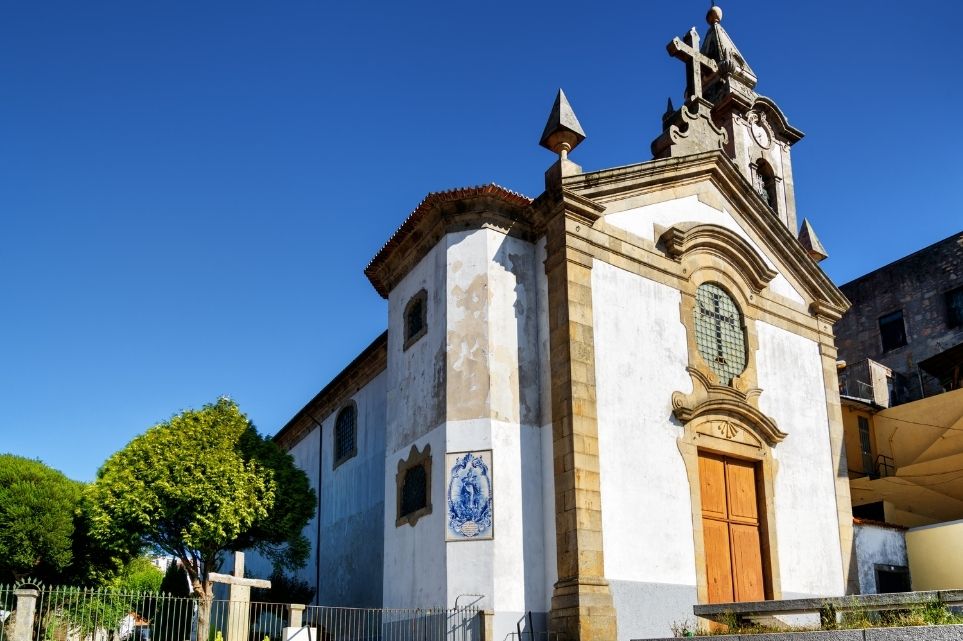
Santa Marinha Church
Take a ride on the Teleferico de Gaia and enjoy the Douro River’s view and explore Serra do Pilar’s viewpoint. This short but scenic cable car ride puts you near the upper metro station near Jardim do Morro Park.
From Jardim do Morro Park, walk to the Monastery of Serra do Pilar. This church is circular with a dome, surrounded by a balcony, a grand terrace overlooking the city of Porto below. Today, we witnessed a beautiful bride and her wedding party celebrating her marriage to a very handsome groom.
- Fee: Approximately $6.00 pp one-way to ride the Teleferico de Gaia.
I hope this blog inspires you to check the beautiful city of Porto, Portugal. We found Porto to be a charming place to visit. I recommend you visit my resource page to find the best deals on travel. While Porto is very reasonable in price, many tour companies offer some great packages.
Enjoy your travels! Please read my blogs about other exciting places around the world at Traveling Lens Photography.
If you want to read more about Antalya, follow me on Facebook, Instagram, or Pinterest as I share my journey.
Inshallah (God willing!)


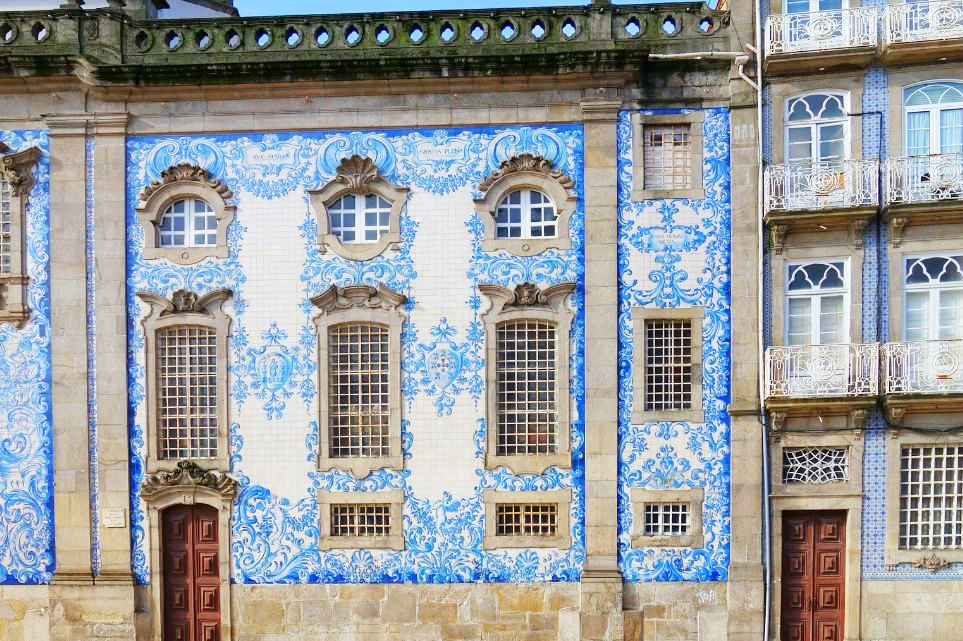
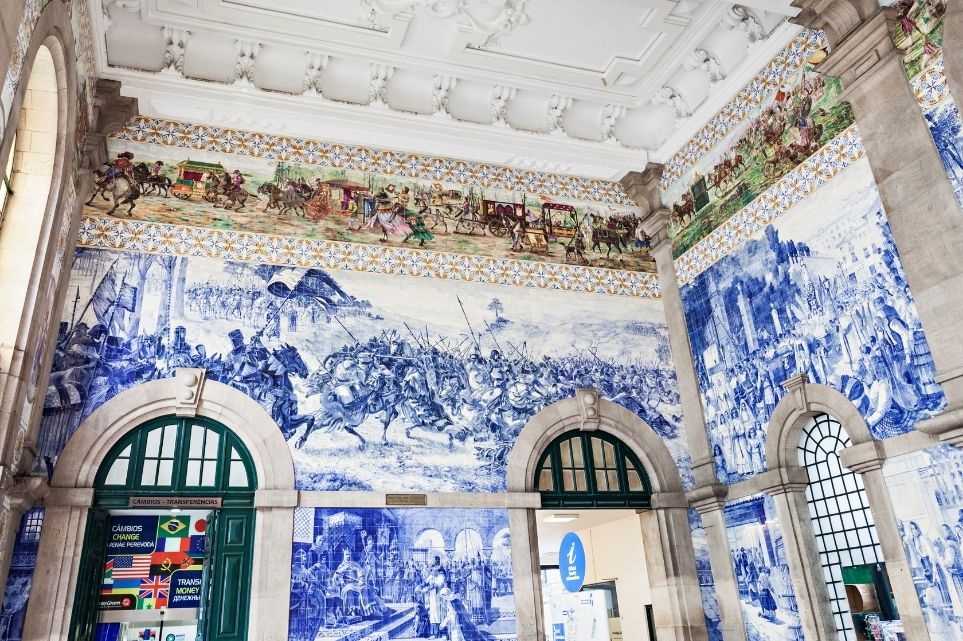
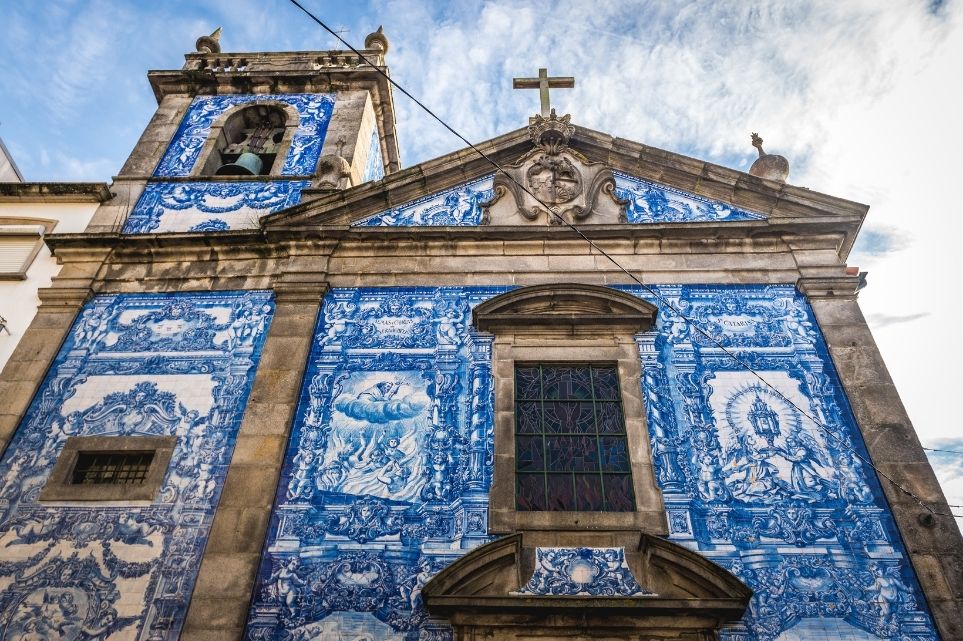
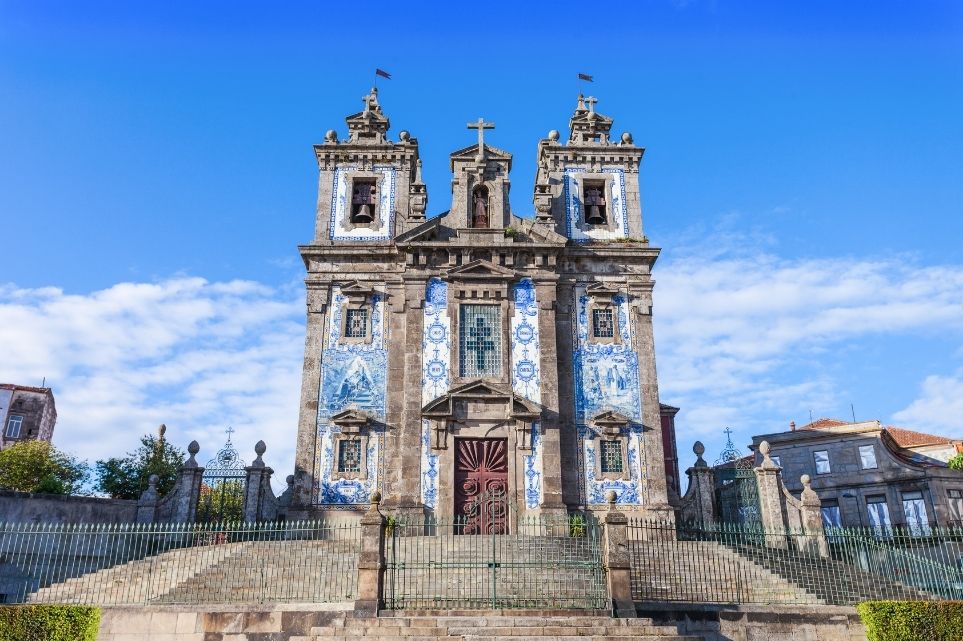
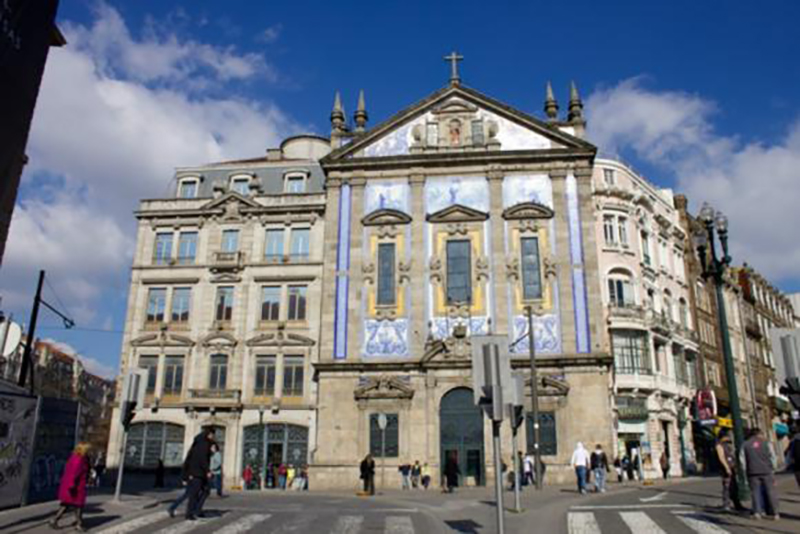
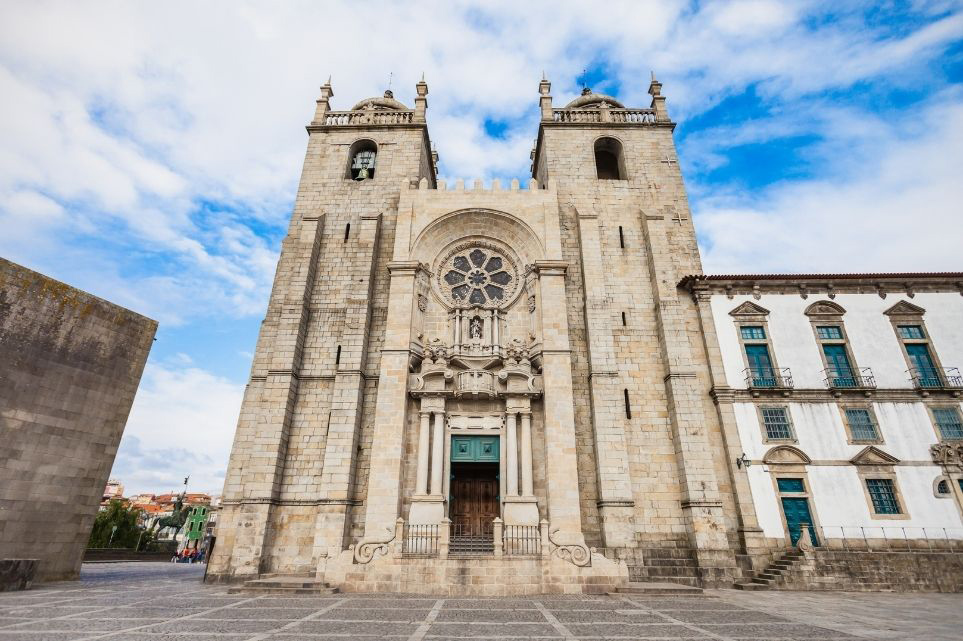



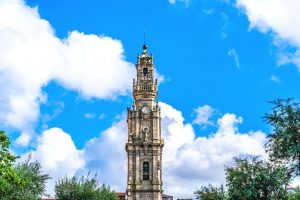
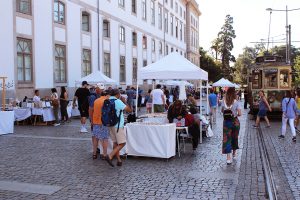
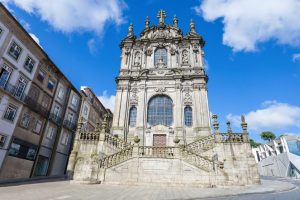
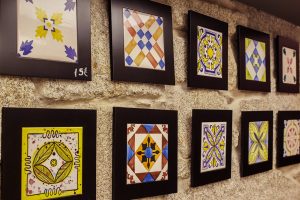
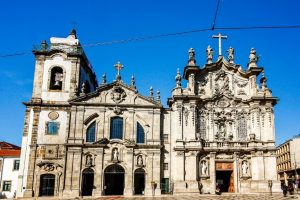
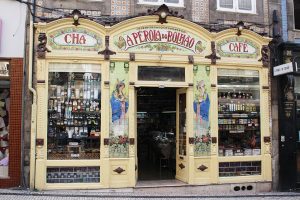
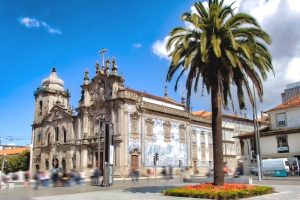
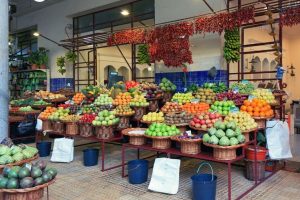
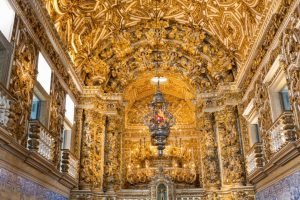
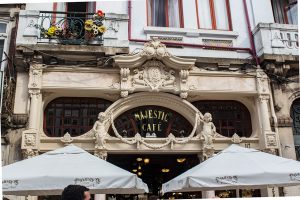
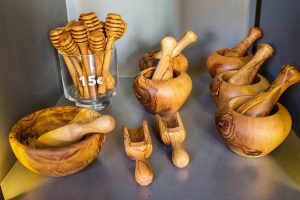
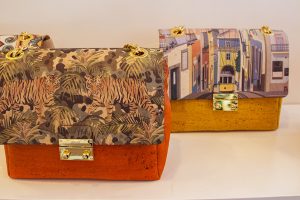
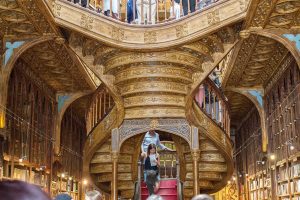
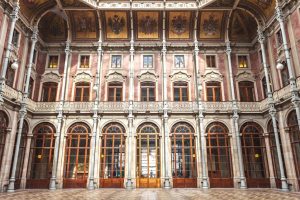
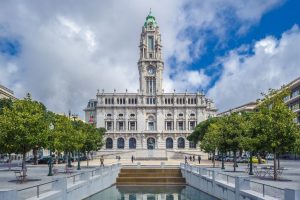
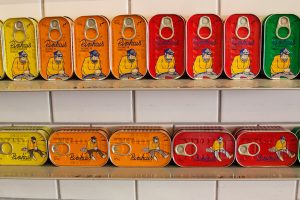
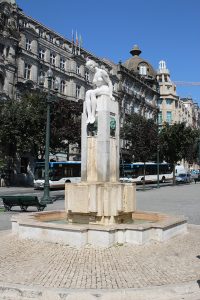
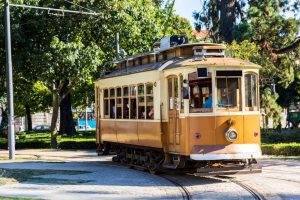
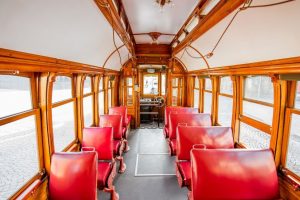
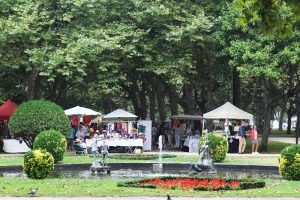
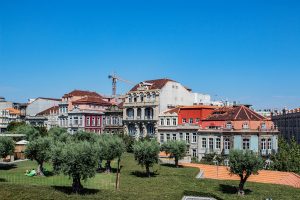
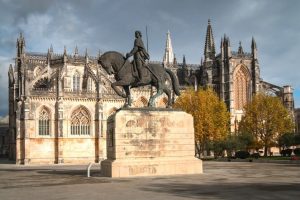
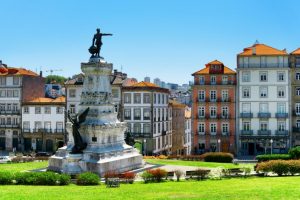
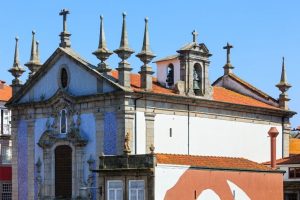
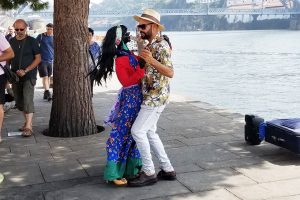
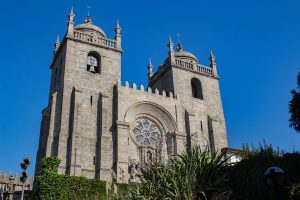
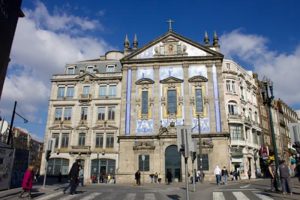
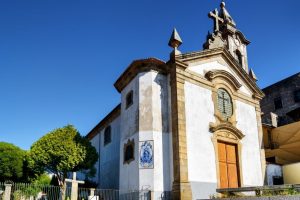
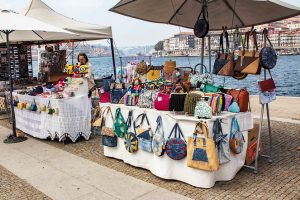
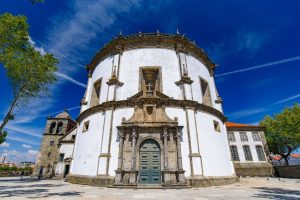
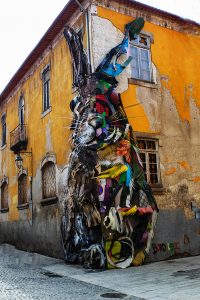
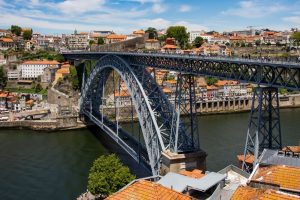
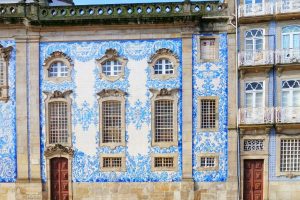
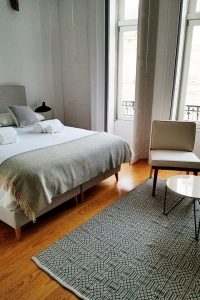
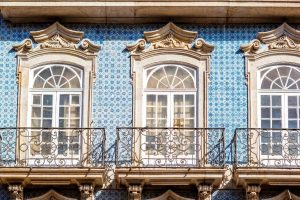
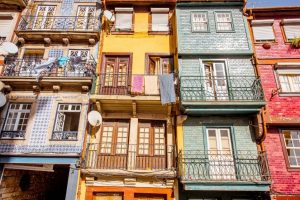
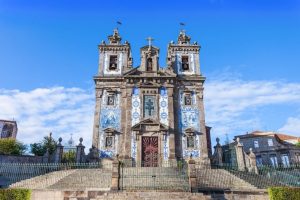
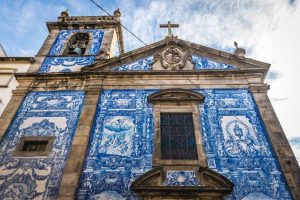
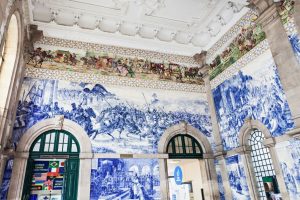

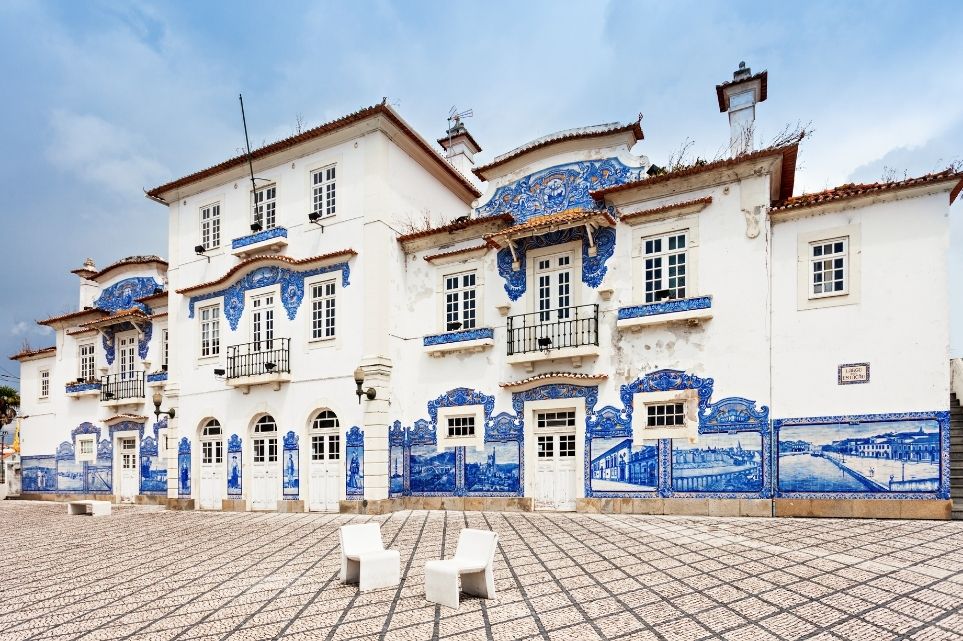
Pingback: Faro: A Traveler's Oasis - Travel blog | Traveling Lens Photography
Pingback: A Day Trip to Ferragudo and Portimão - Travel blog | Traveling Lens Photography
Pingback: Timeless Adventure in Alfama District - Travel blog | Traveling Lens Photography
Pingback: Travel Guide to Baixa District - Travel blog | Traveling Lens Photography
Pingback: Seven Hanging Valleys Trail in Algarve - Travel blog | Traveling Lens Photography
Pingback: Unveiling Sintra's Charms: A Tuk-Tuk Excursion - Travel blog | Traveling Lens Photography